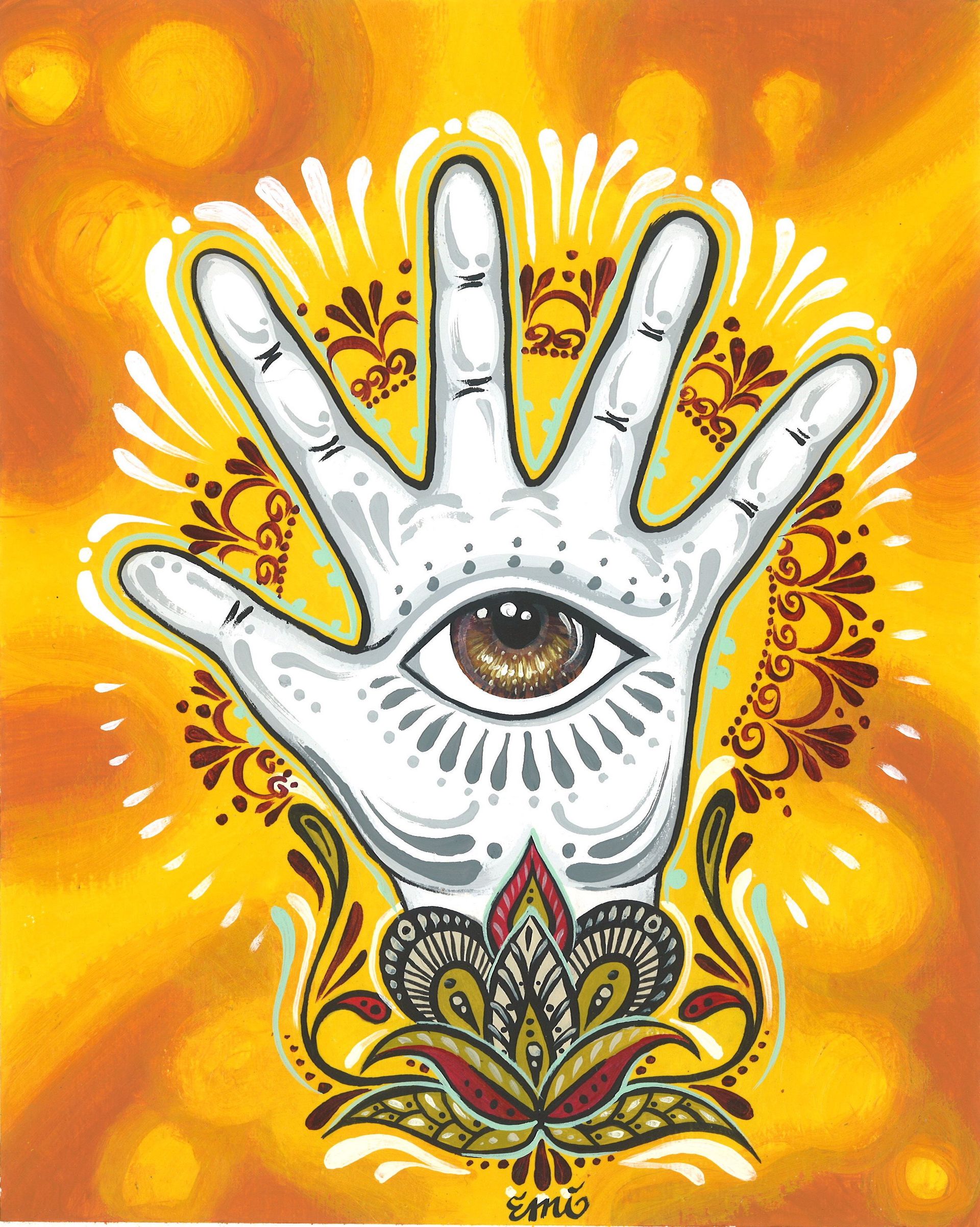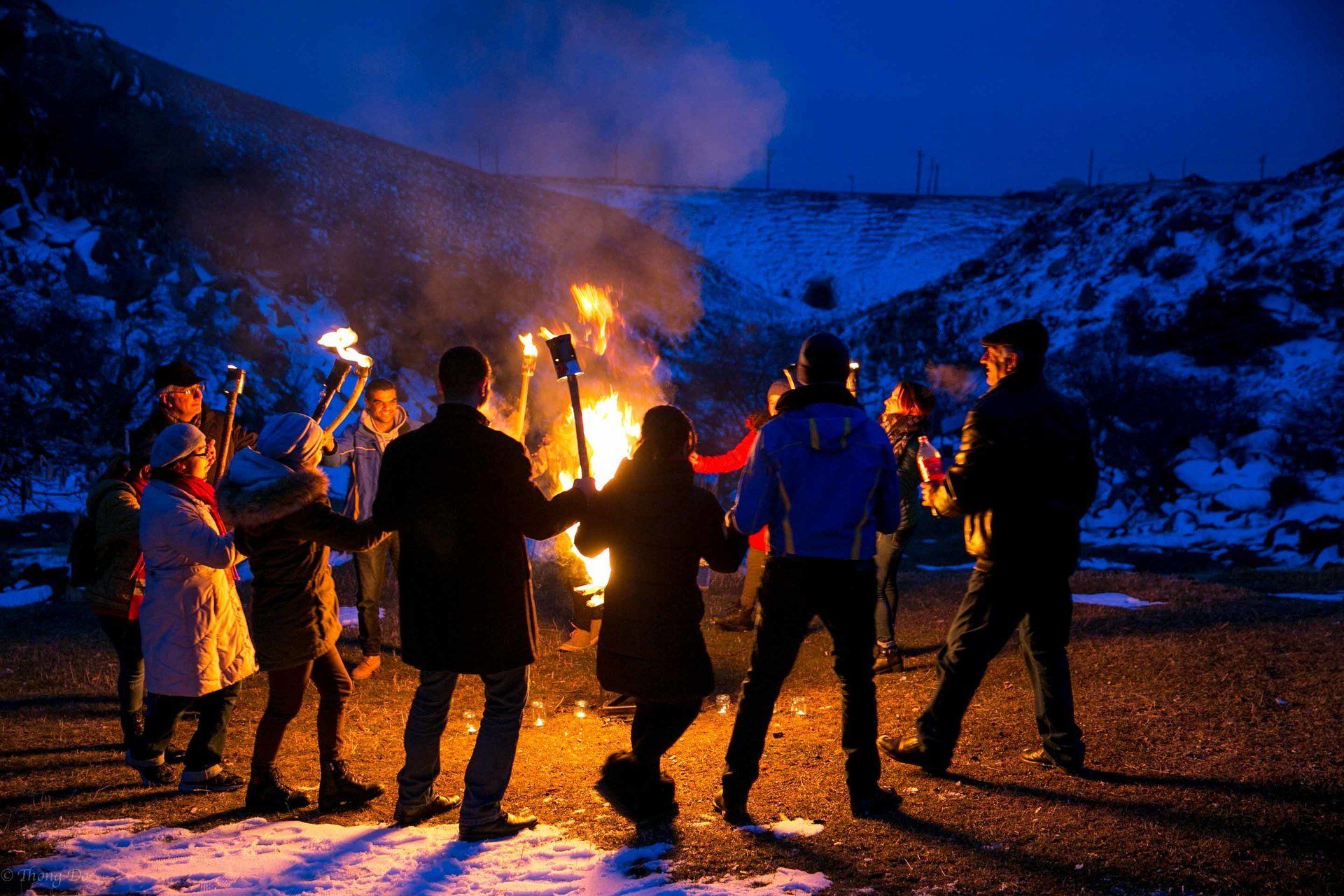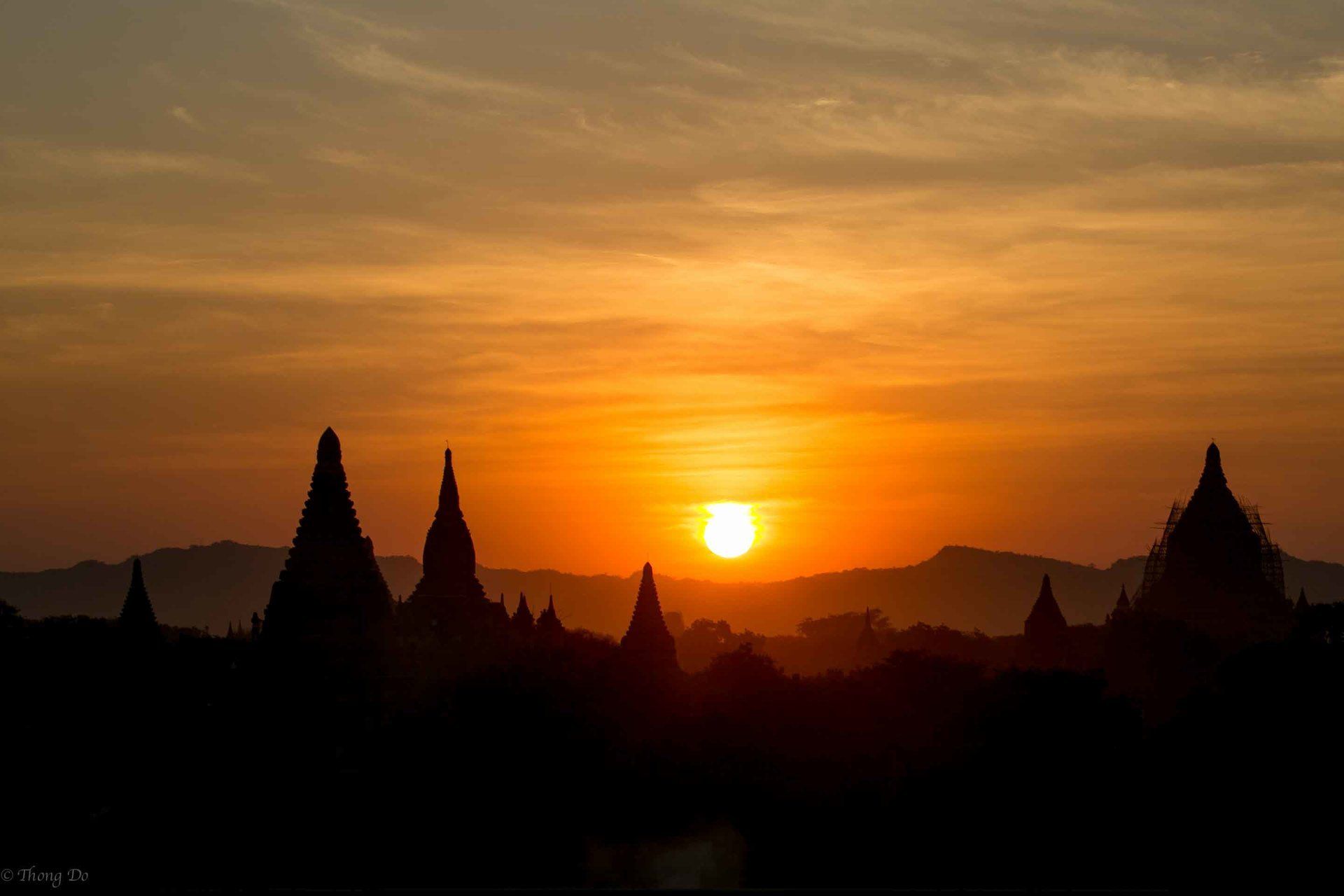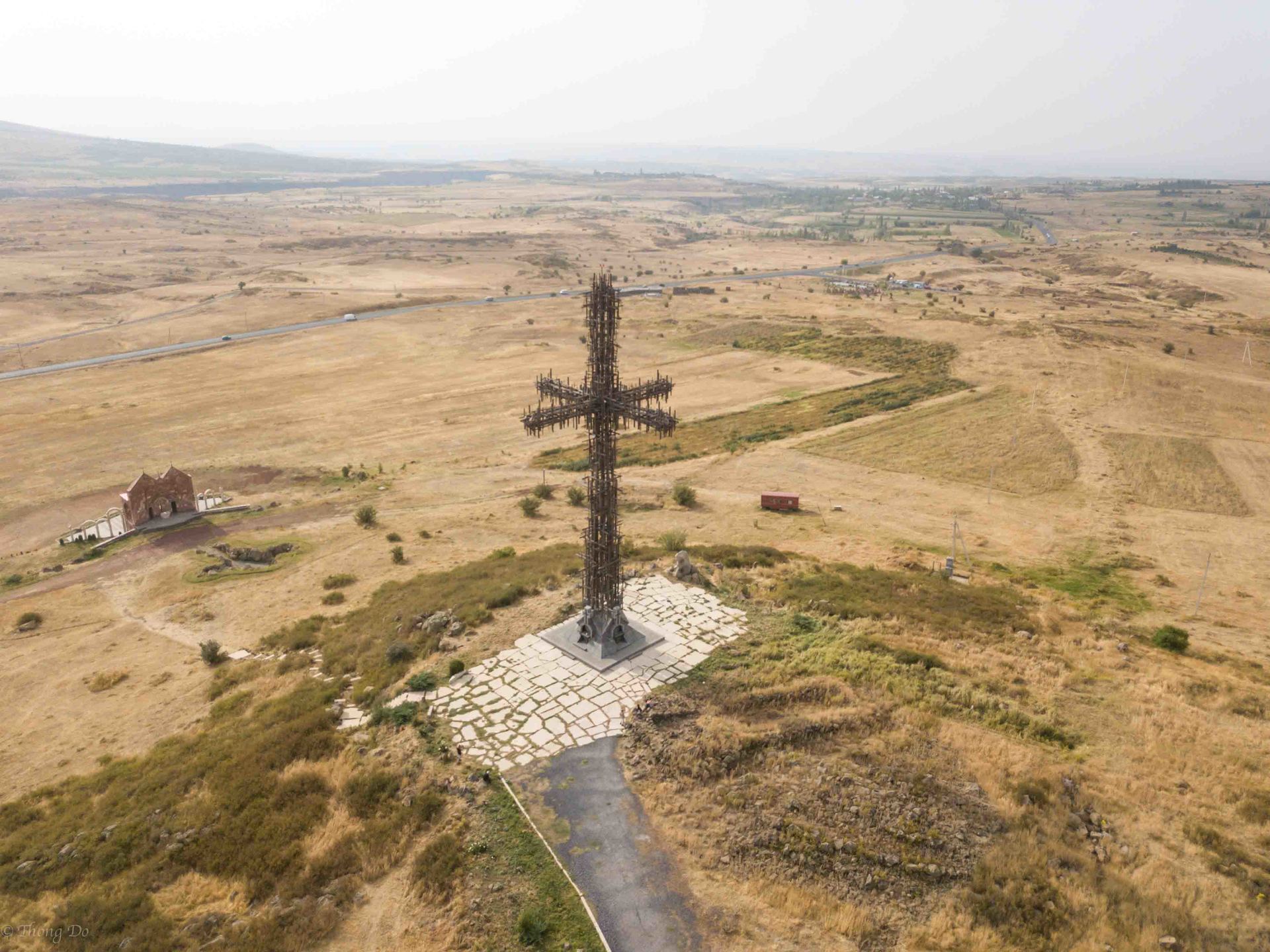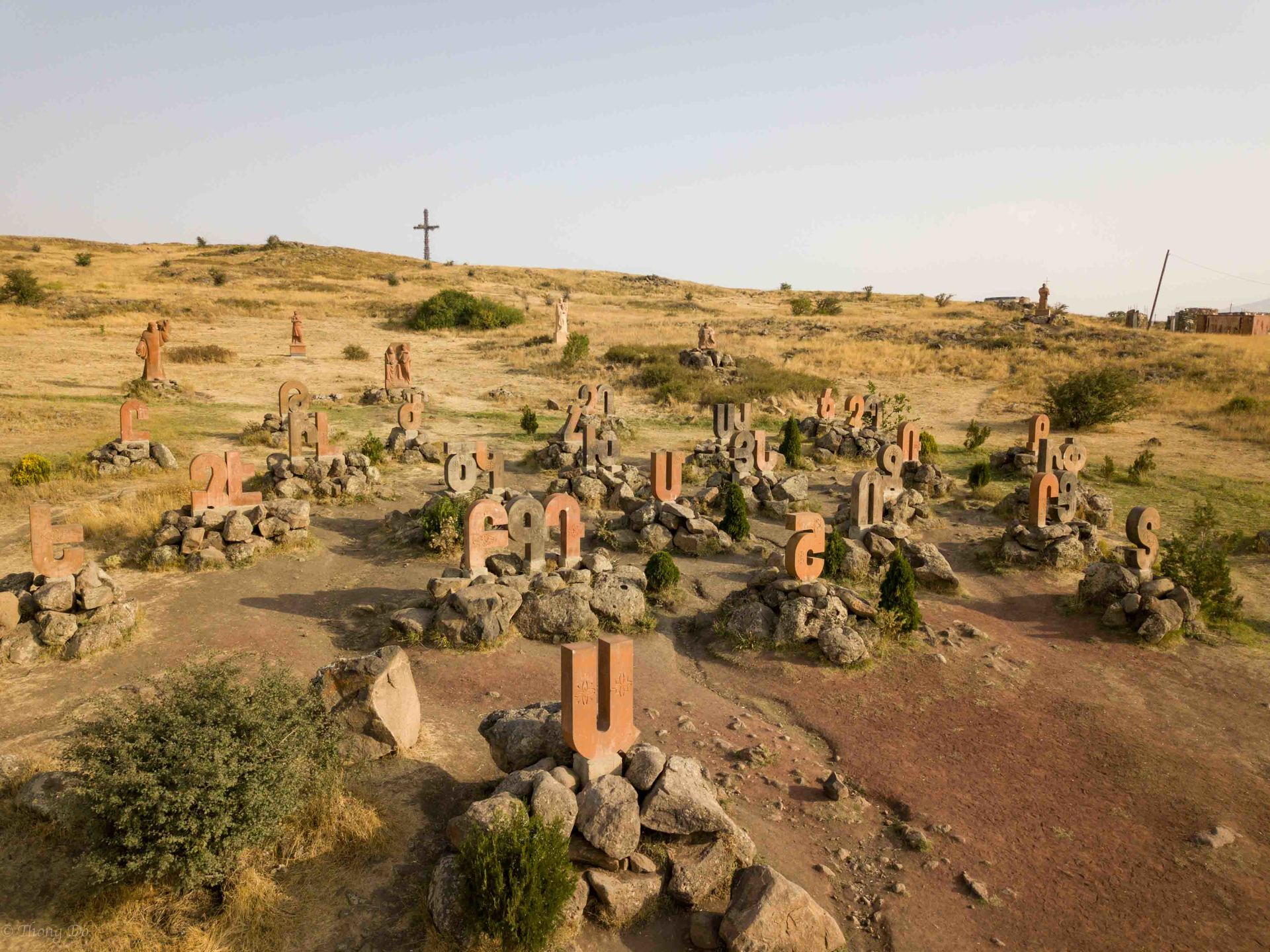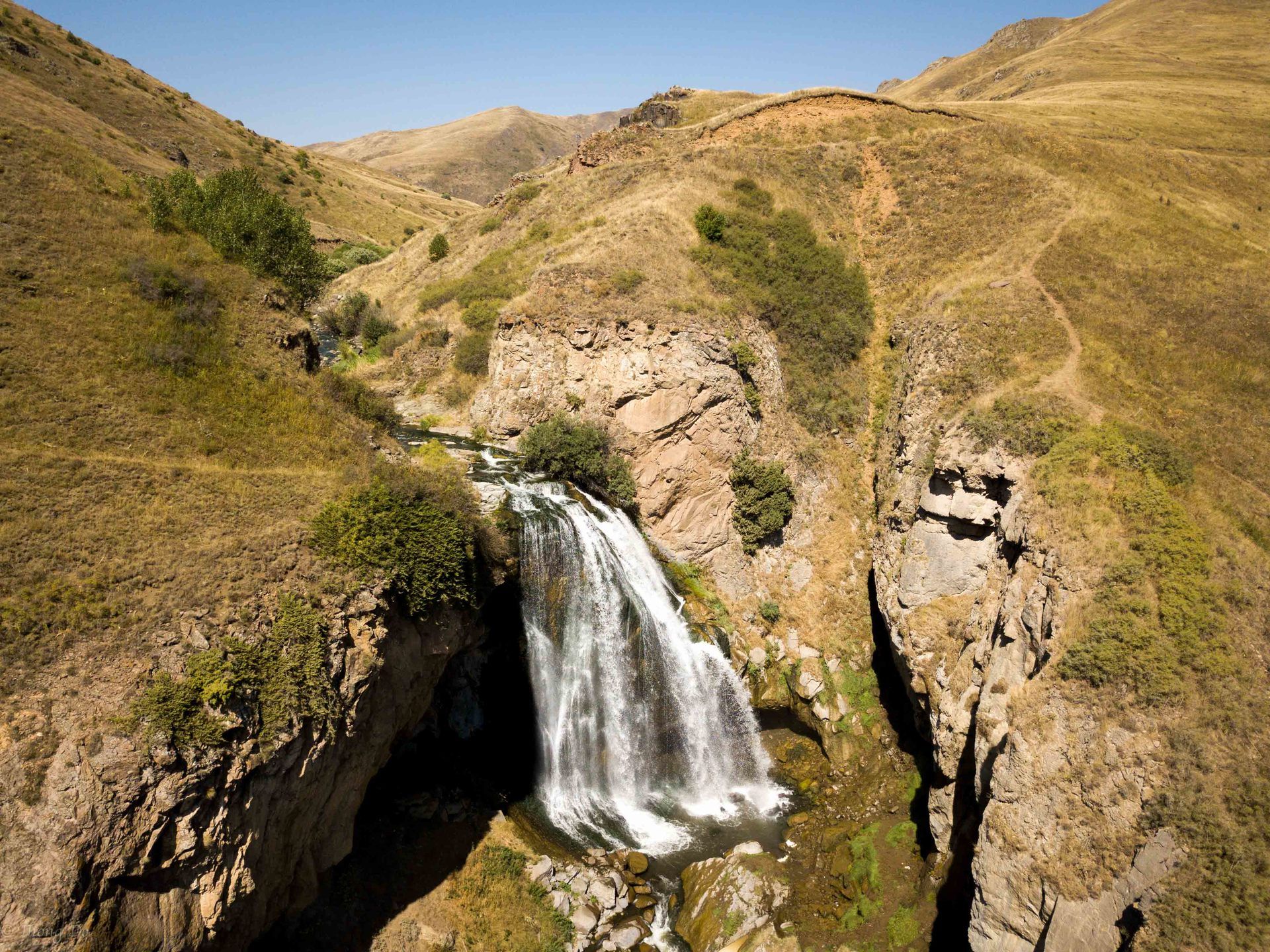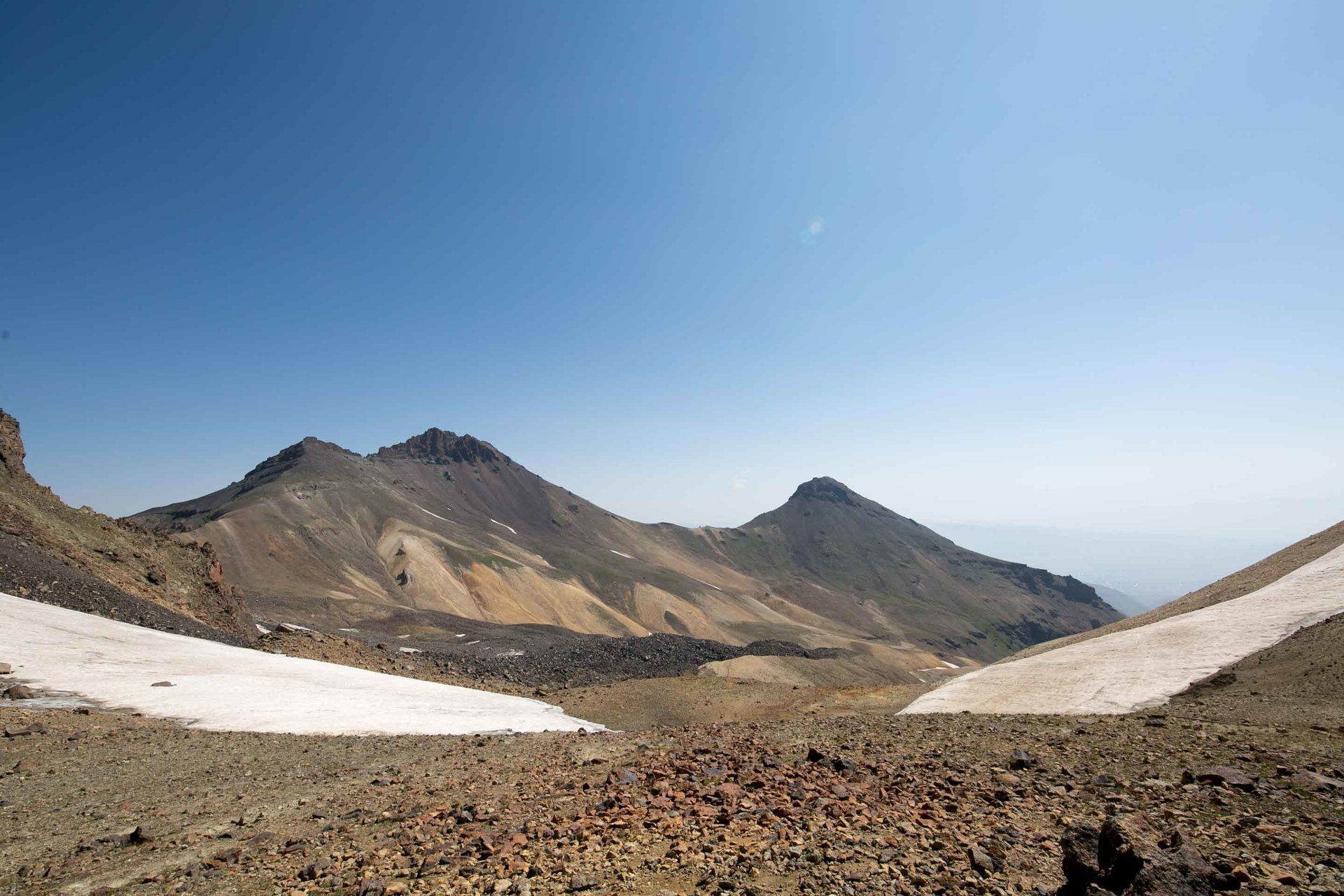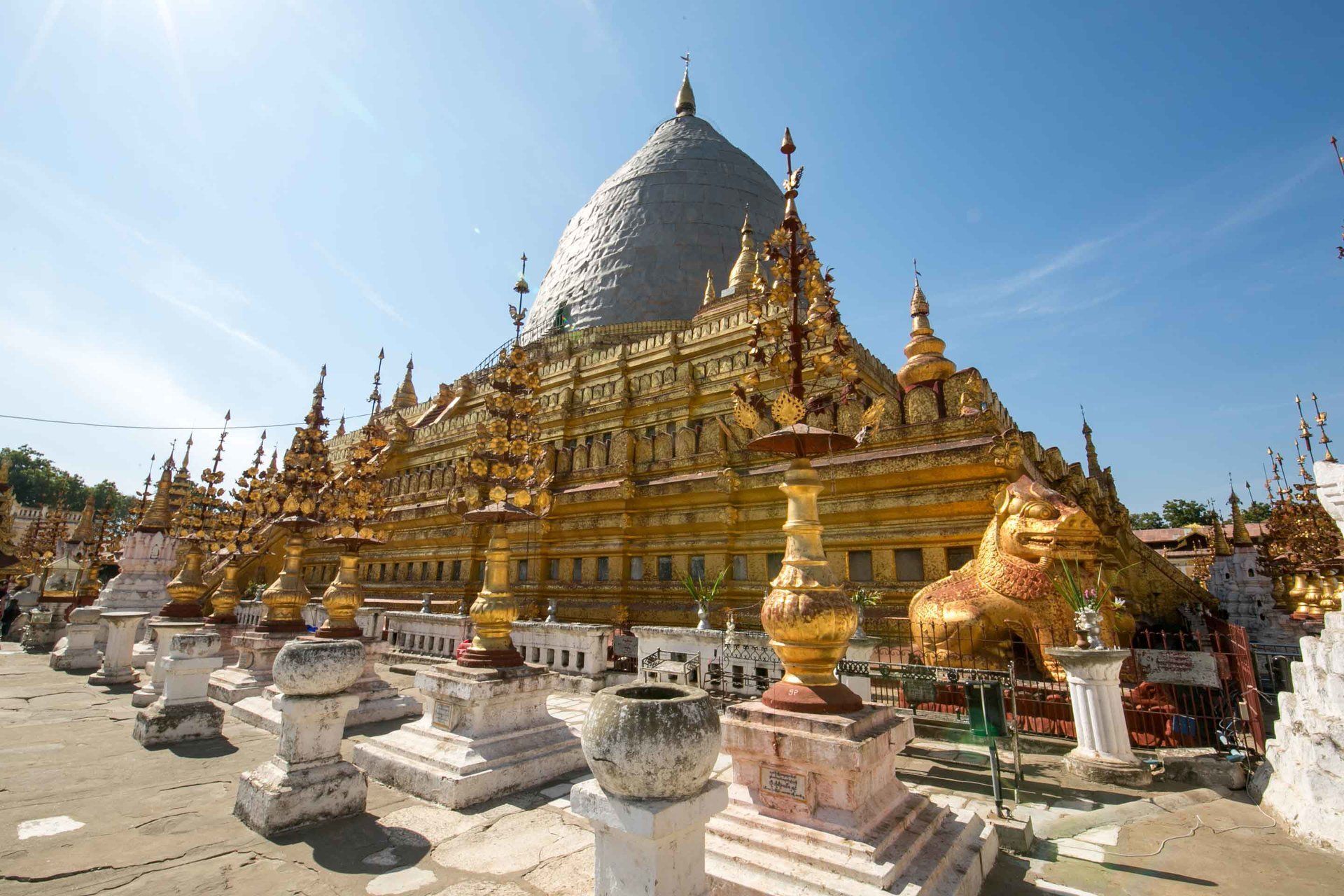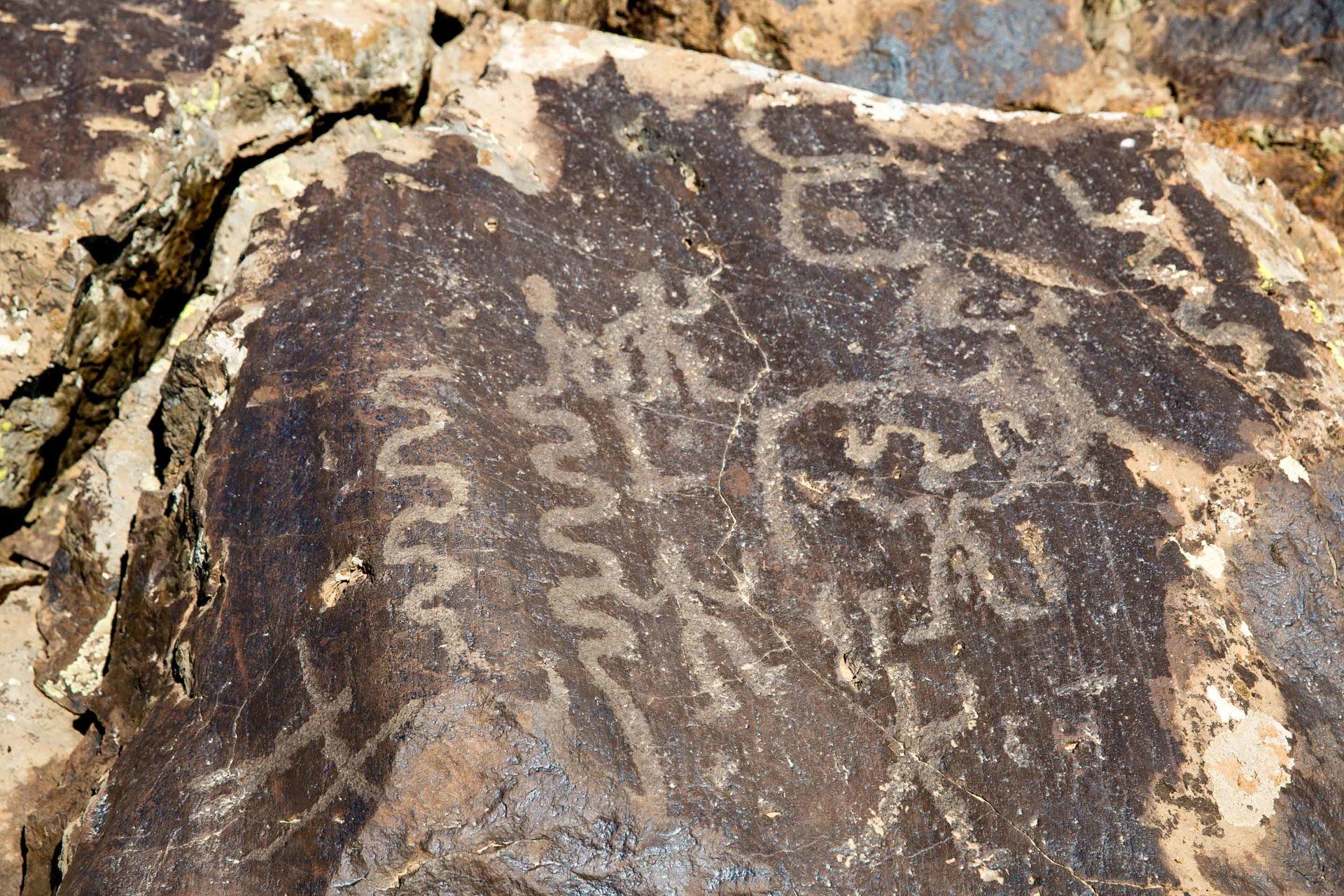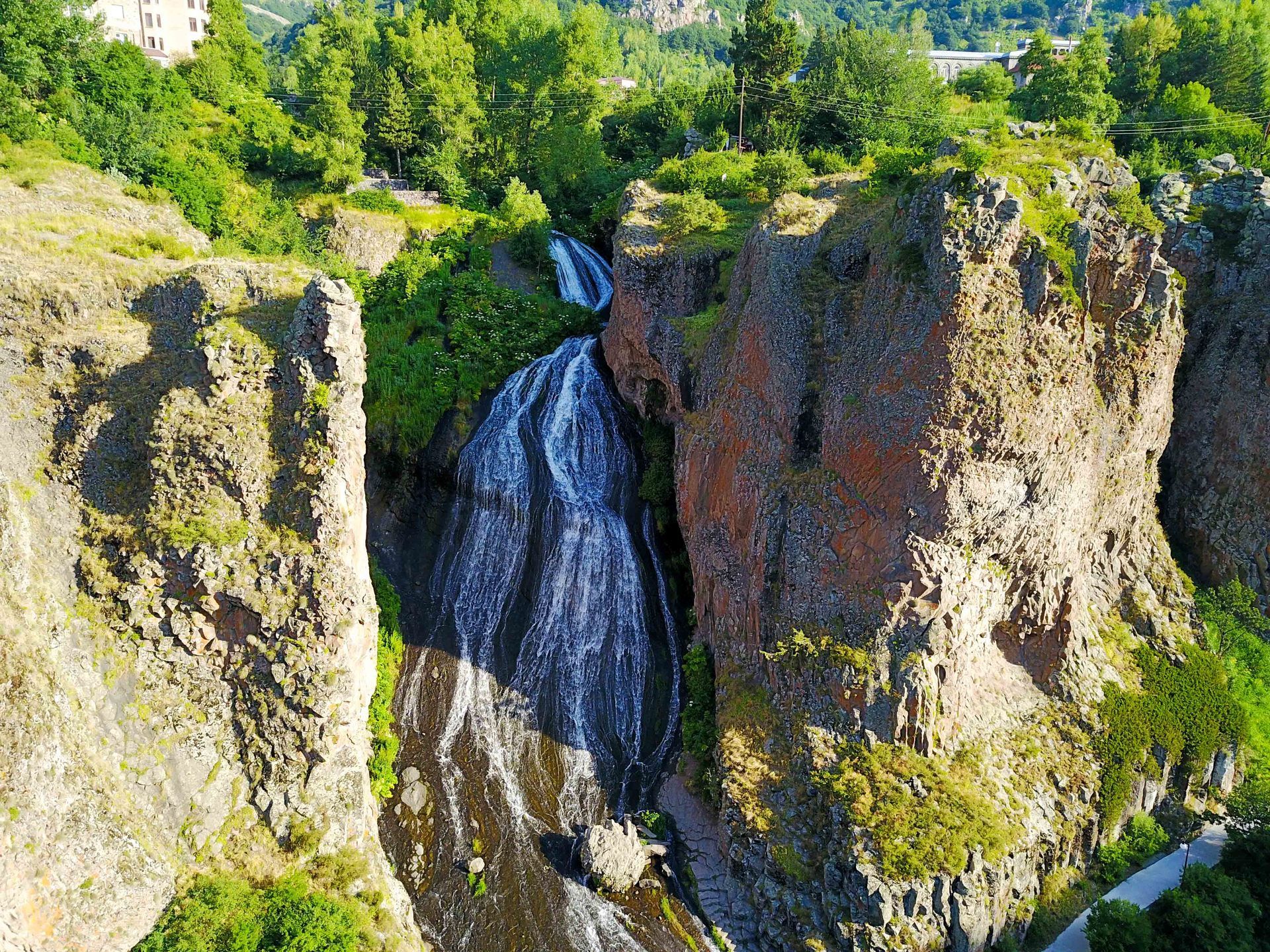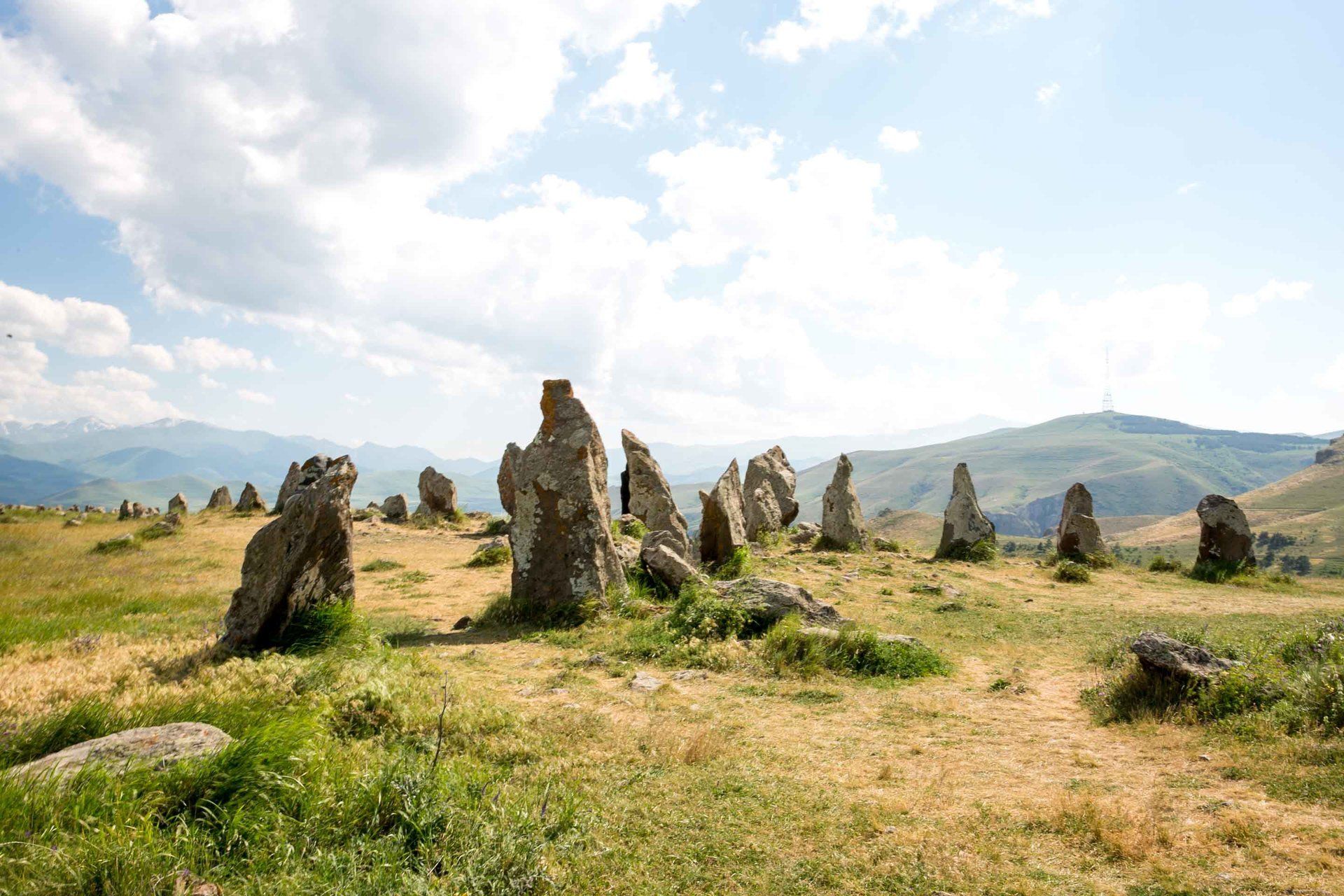What to see in Mandalay, Myanmar: Part 4 The Mahamuni Pagoda, The Shwenandaw (Golden Palace)Monastery, Su Taung Pyae Pagoda, and the Kuthowdaw Pagoda
- By Thong Do
- •
- 16 Apr, 2017
- •
One of the must see cultural sites to witness is the Mahamuni Pagoda in Mandalay. A major pilgrimage stop for the devout, this Buddhist complex was built in the late 18th century and is a teaching monastery to roughly 400 monks of the Thudhamma Nikaya order. It is the second most revered shrine after the Shwedagon Pagoda in Yangon. Built by King Bodawaya of the Konbaung Dynasty after the Mahamuni image was captured during the invasion of the Arakan Kingdom this complex has many sites worth seeing. The main attraction here is the Mahamuni (meaning the Great Image) Buddha image, the most revered Buddha image in the country due to it being one of only five likenesses of the historical Buddha cast in his lifetime. Made of bronze and weighing in at 6.5 tons it stands nearly 4 meters high.
The Mahamuni Buddha is enshrined in a small chamber topped with a 7-tiered Pyatthat Burmese style roof. To pay respect to the Buddha you have to walk through a metal detector and then climb up to see the Buddha seated on a throne. The posture of the Buddha is known as the Bhumisparsa Mudra and the first thing you notice is the amount of precious stones. The other thing you notice is the amount of gold leaves placed all over the Buddha statue. So many gold leaves have been placed on it by the devotees that it’s almost 15 centimeters thick (6 inches) and gave the Buddha a unique shape. There are photos of what it looked like originally to see how it slowly transformed over the years. Only men are allowed to enter this area and the women can only pray outside of the room but have a TV monitor to see inside.

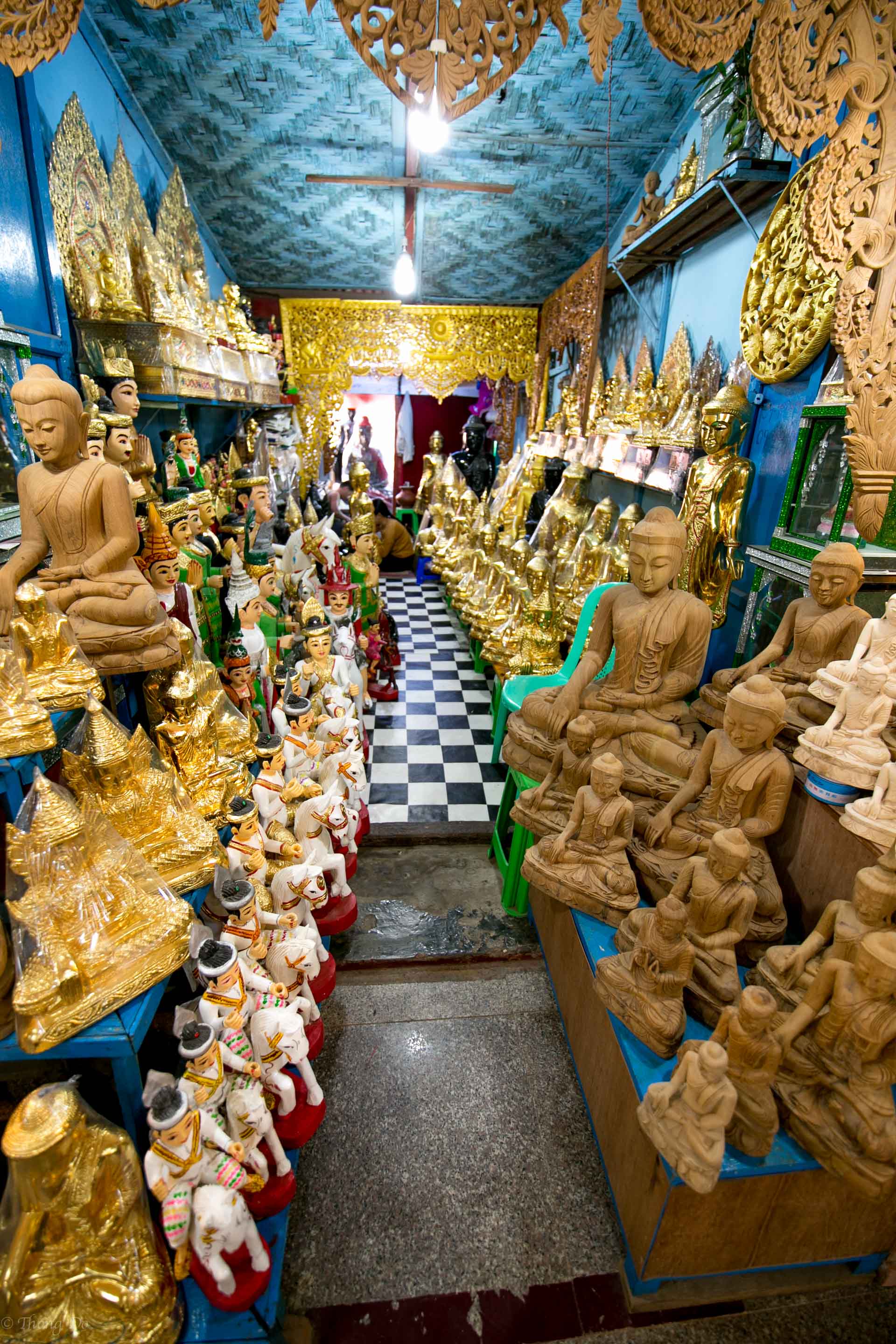
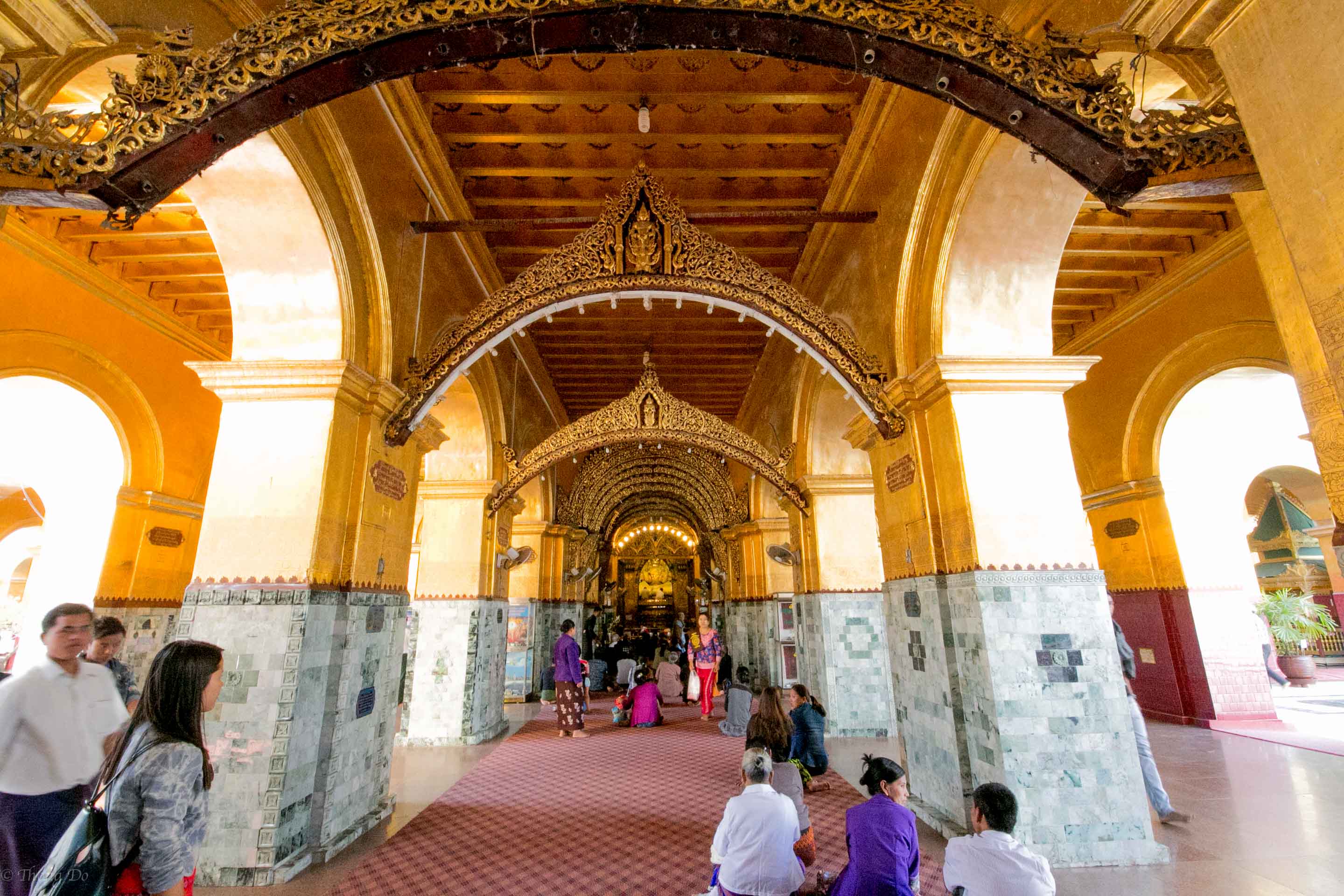
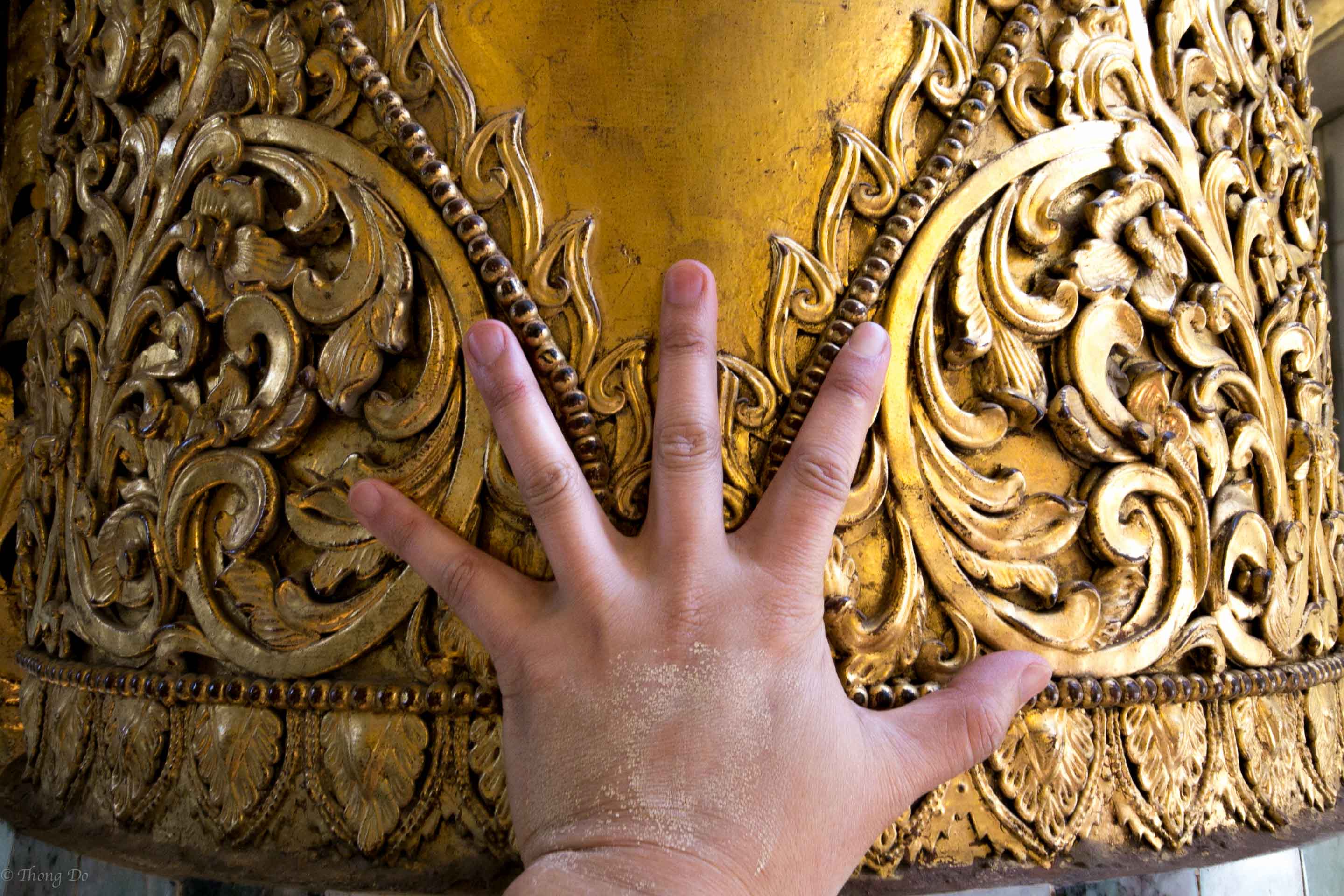
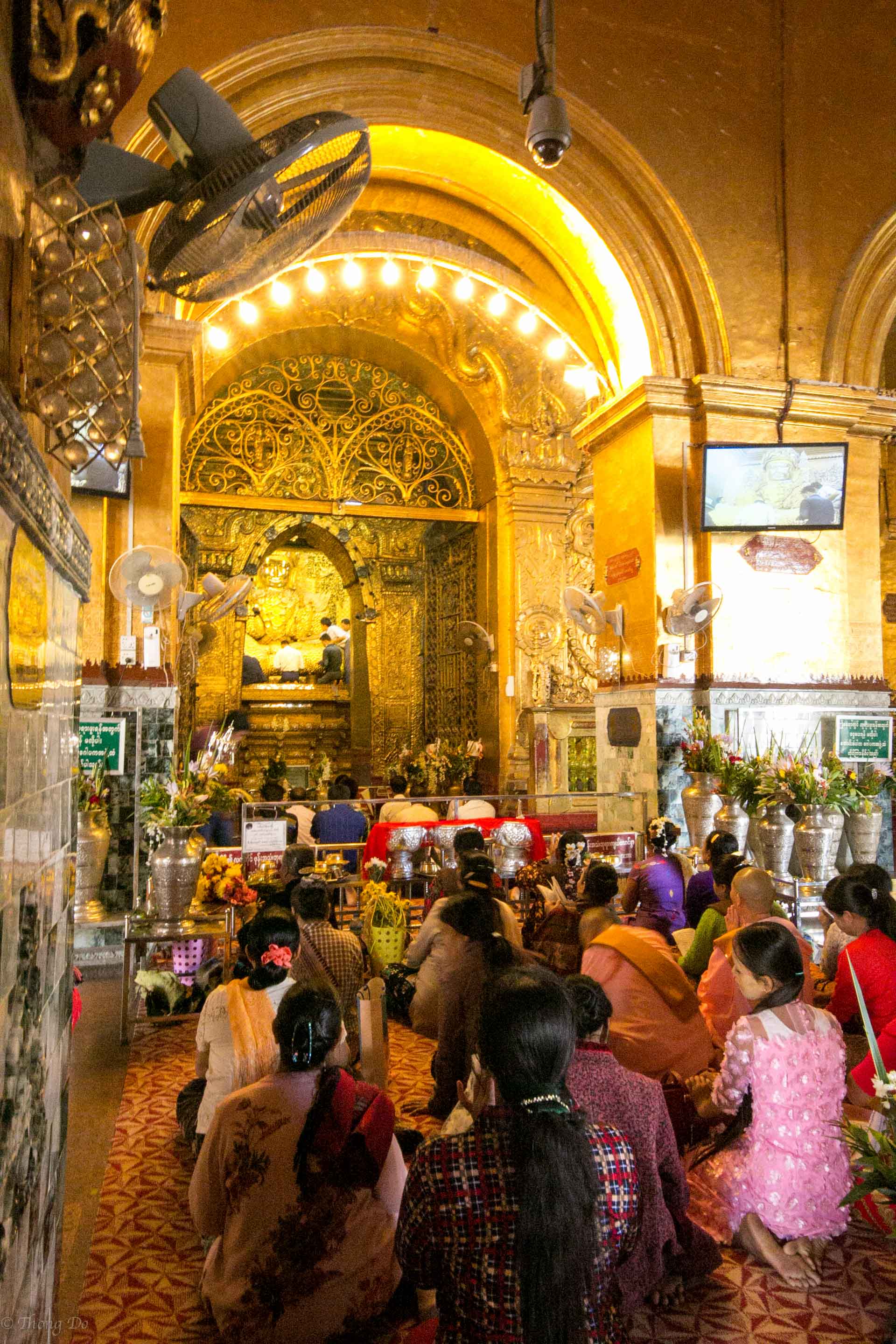
There is also a museum on the grounds that show the history of Buddhism and how it spread across Asia. There are also numerous bronze statues that were once a part of Angkor Wat in Cambodia. Six of them are war spoils from the 15th century. 2 of the bronze statues are warriors and are believed to have healing qualities. Rubbing a particular part of the statue’s body will cure ailments in the corresponding part of the sick person’s body.
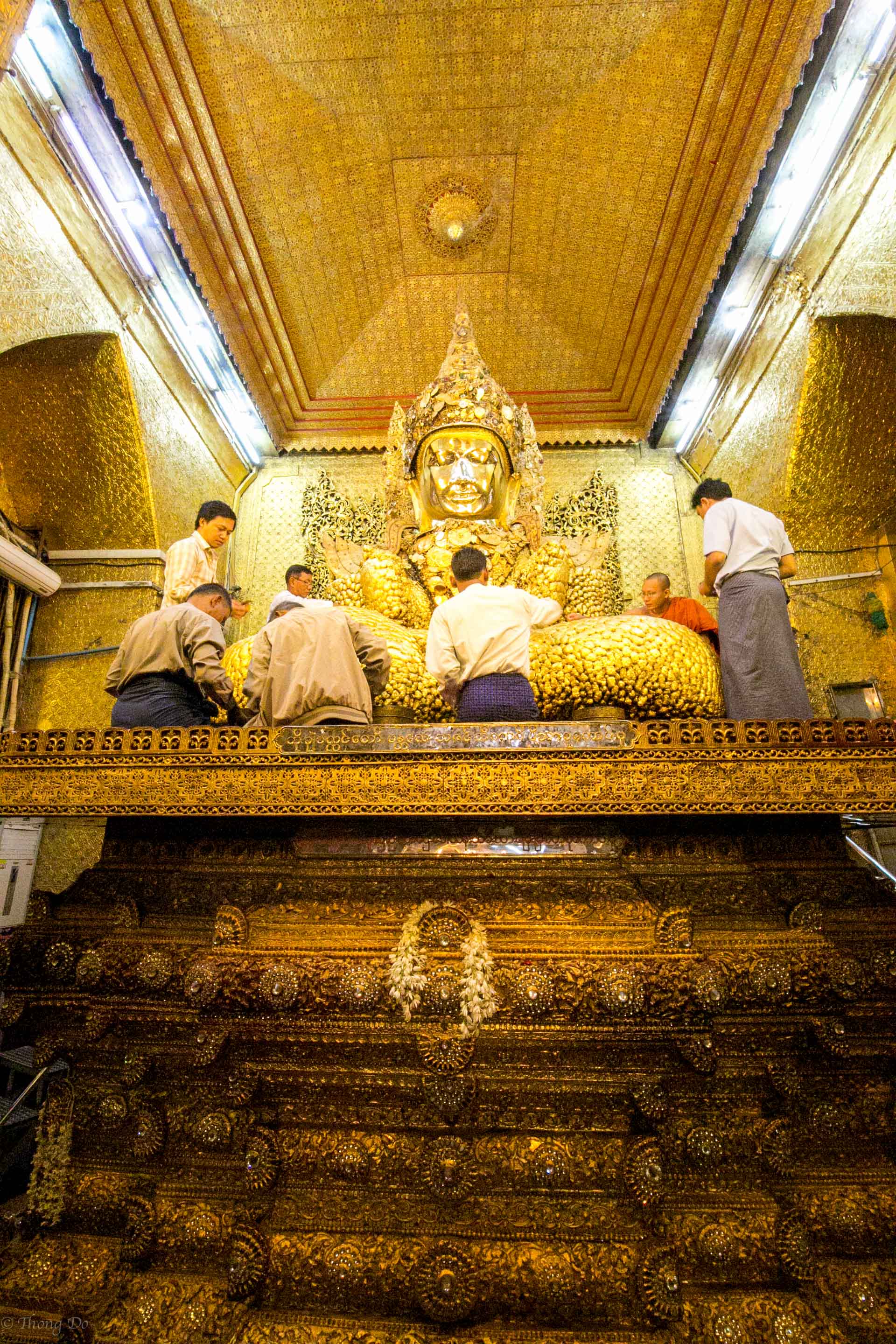
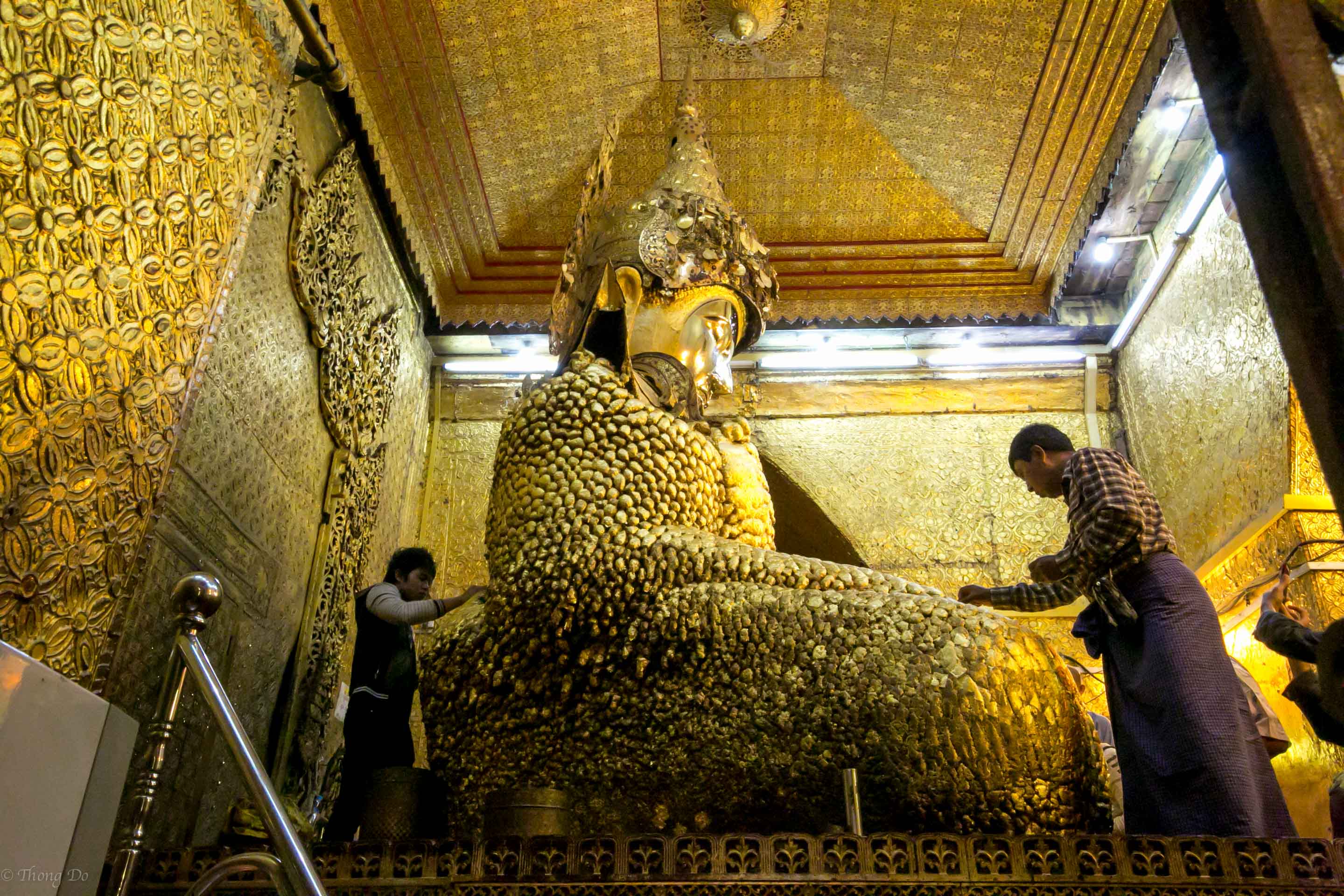
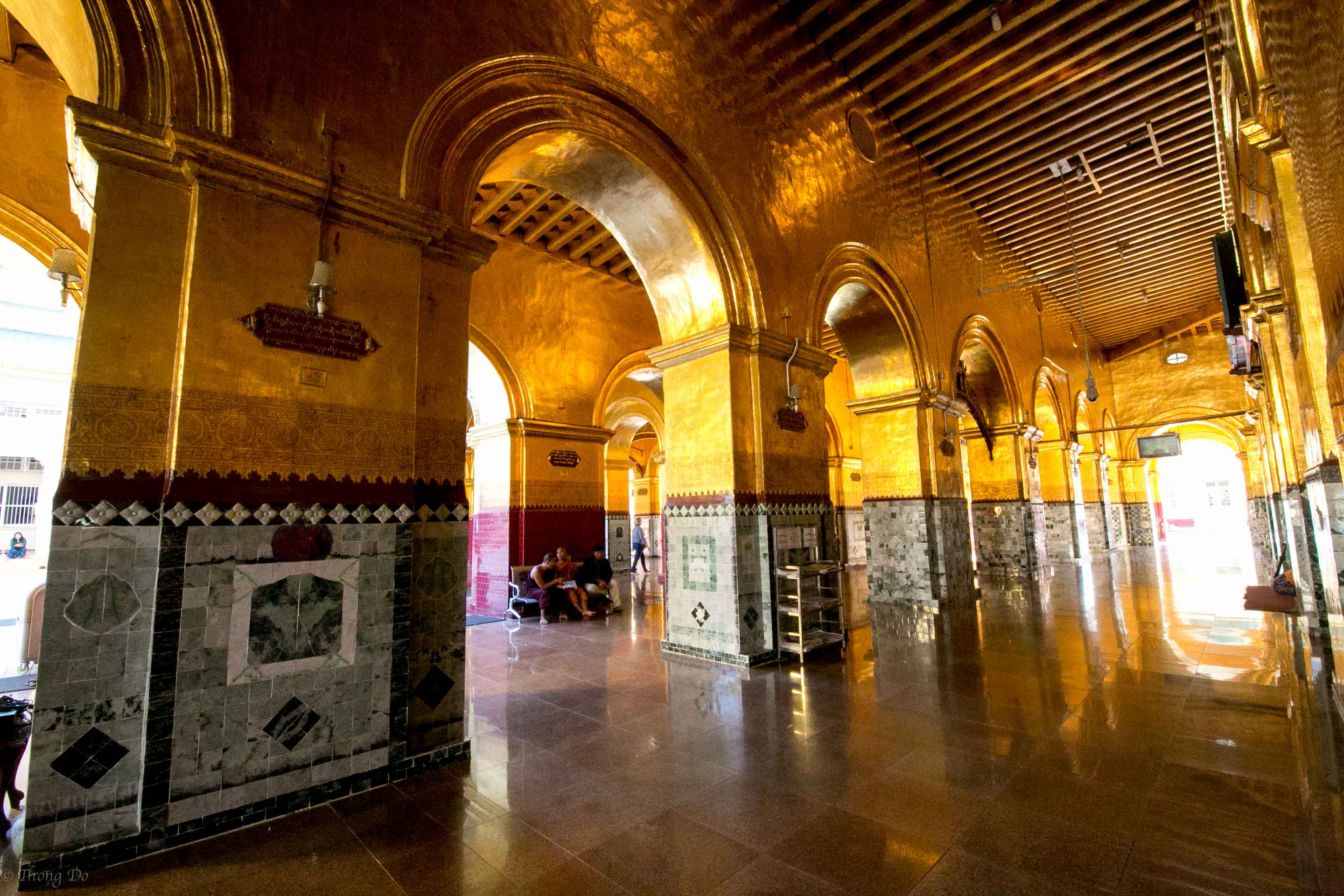
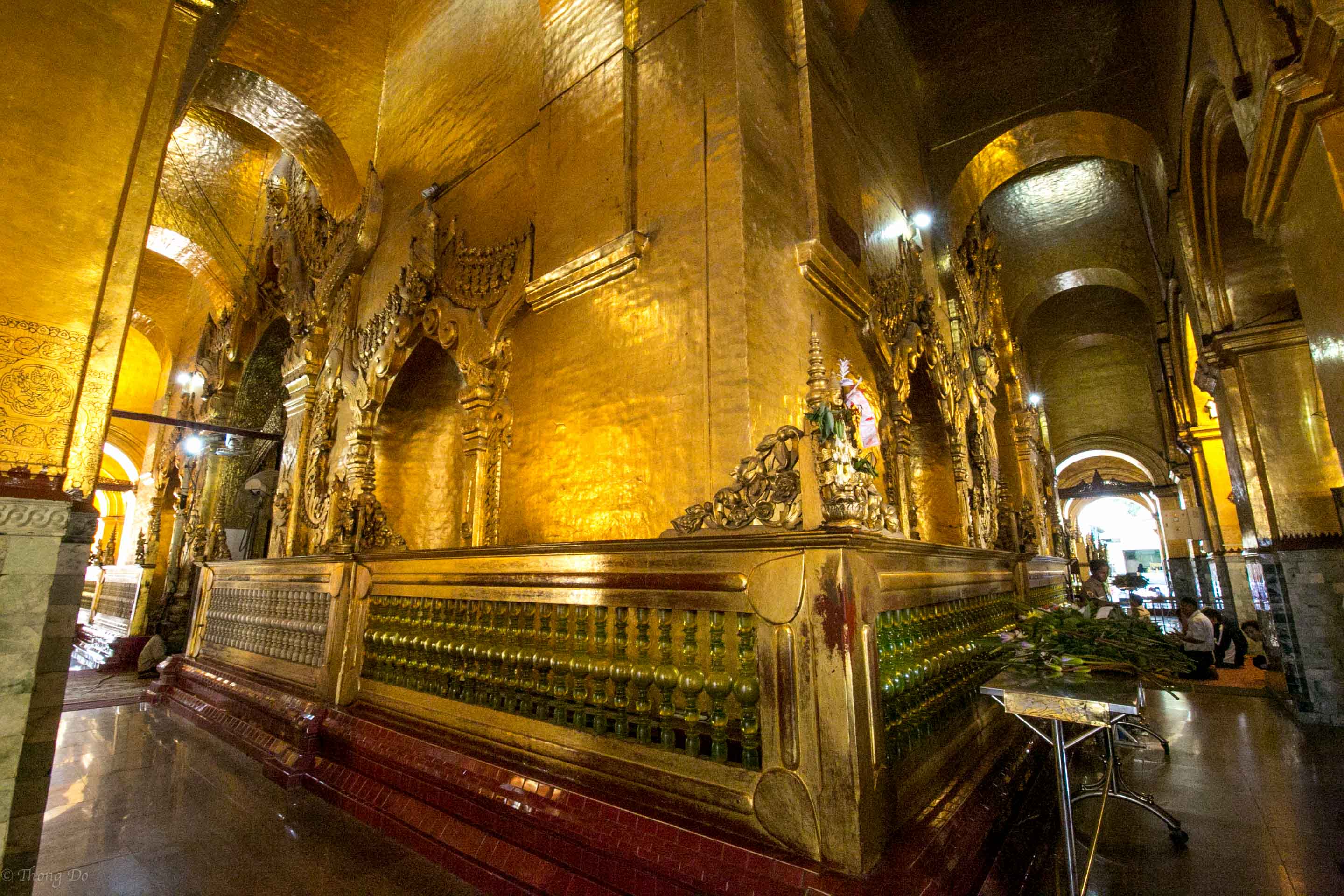
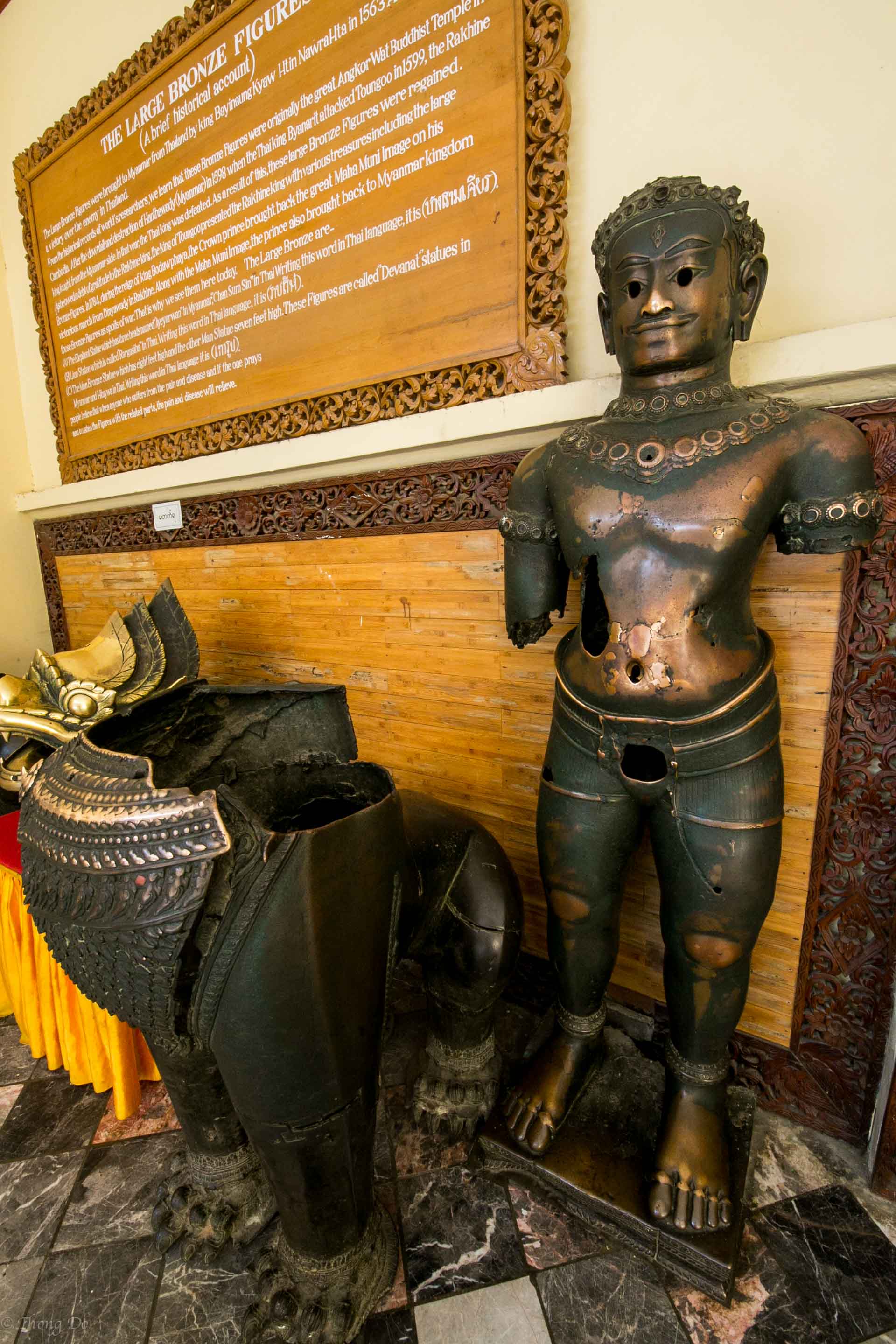
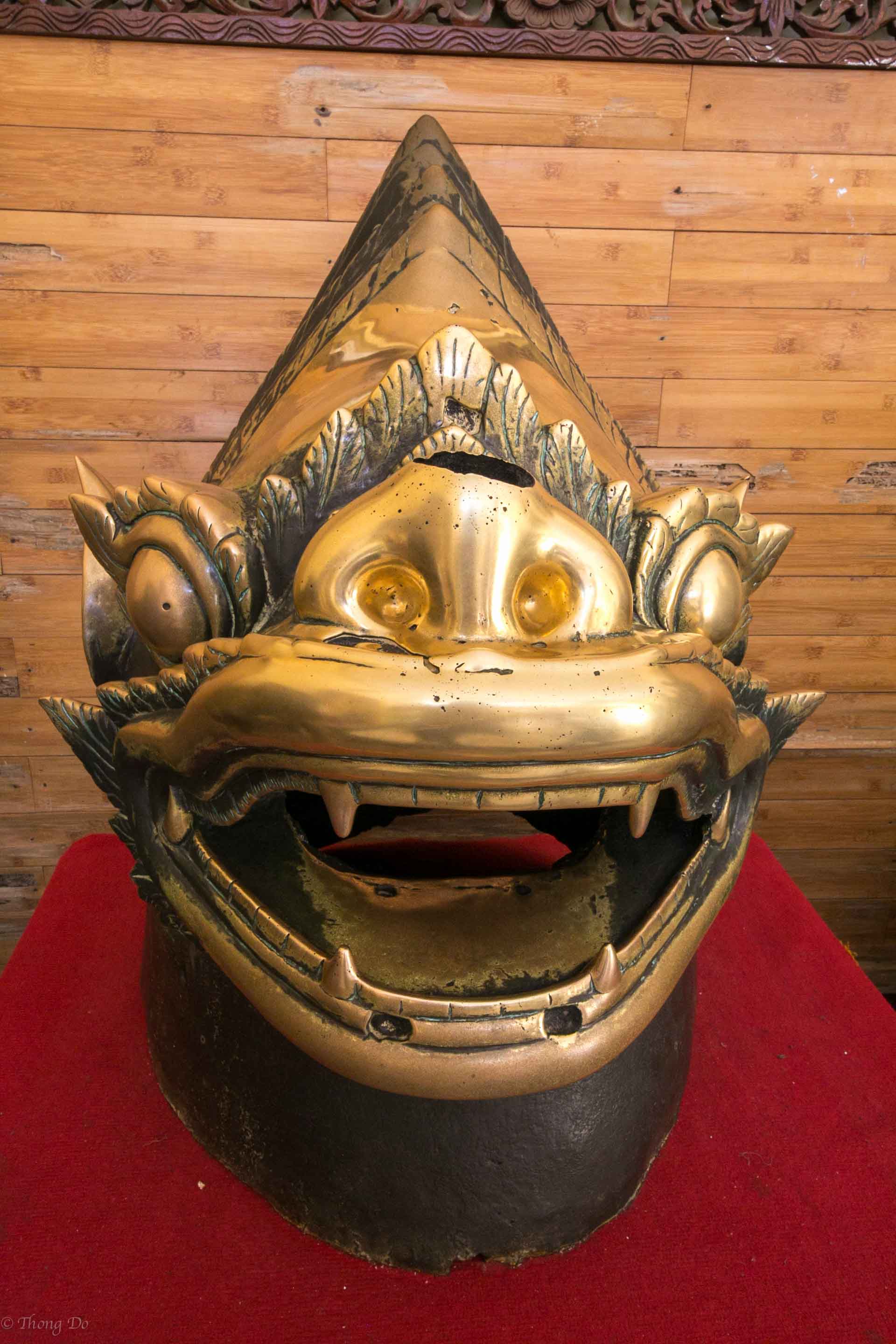
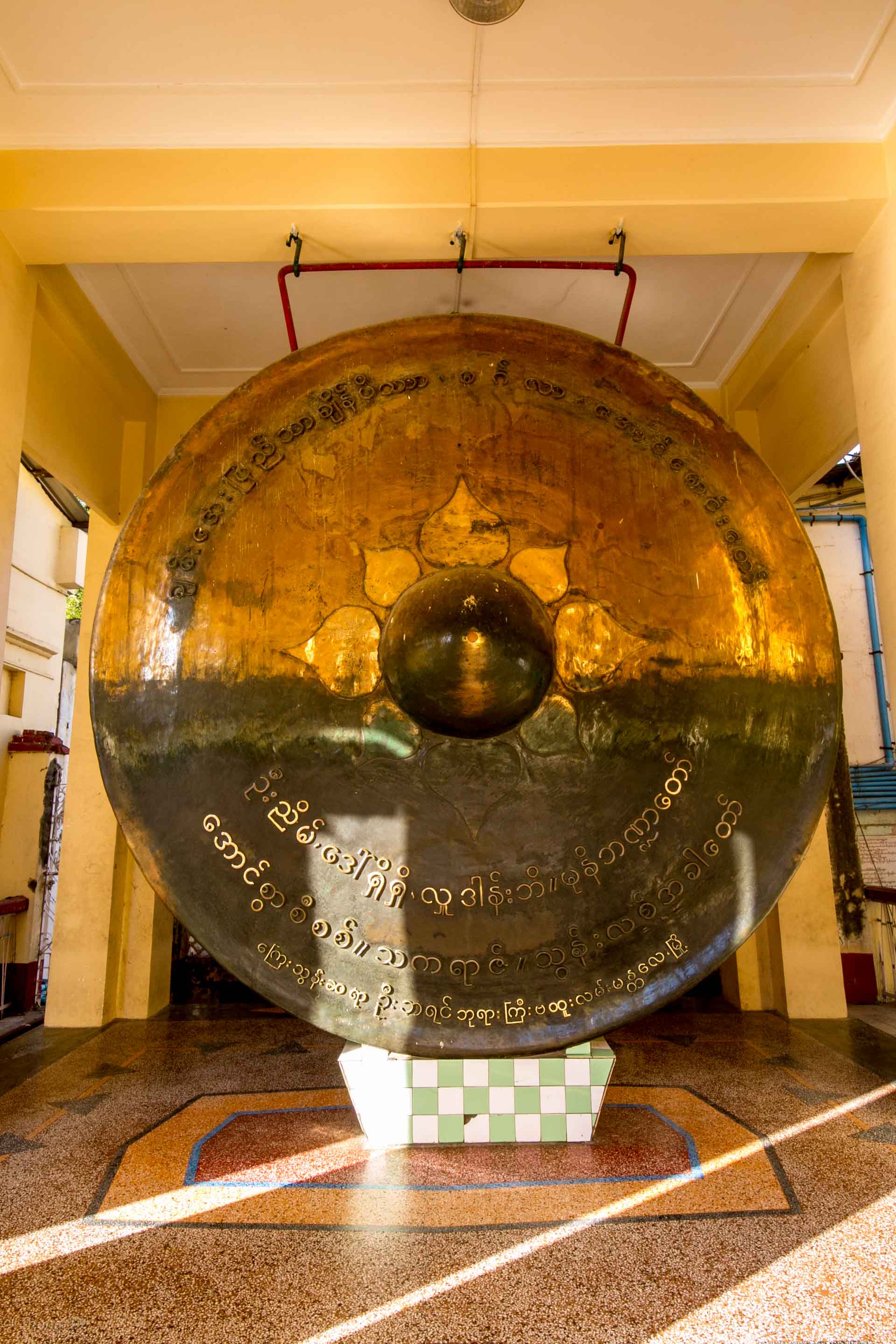
There is plenty to see here since it’s quite large and a lot of work went into making the place ornate. As you walk in you’ll be greeted by dozens and dozens of vendors selling everything from Buddha images, incense, flowers to gold leaves, etc…. The complex is open from 6am to 8pm daily and the fee is roughly $4. Due to the popularity of this revered Buddha image, expect large crowds, especially on Buddhist holidays. February is the busiest sine it holds a festival there. Remember to remove your shoes when entering and dress appropriately.
Another hidden gem in this area is the Shwenandaw Monastery or Golden Palace Monastery. Located just a few meters from the Atumashi Monastery and a few hundred meters from the Mandalay Palace this is probably the most preserved teak building to survive WW2 bombardment. This masterpiece of Burmese carpentry and architecture is renowned for its intricate carvings and attention to detail. It got the name Golden Palace Monastery, because it used to be part of the Mandalay Palace and was completely gilded.
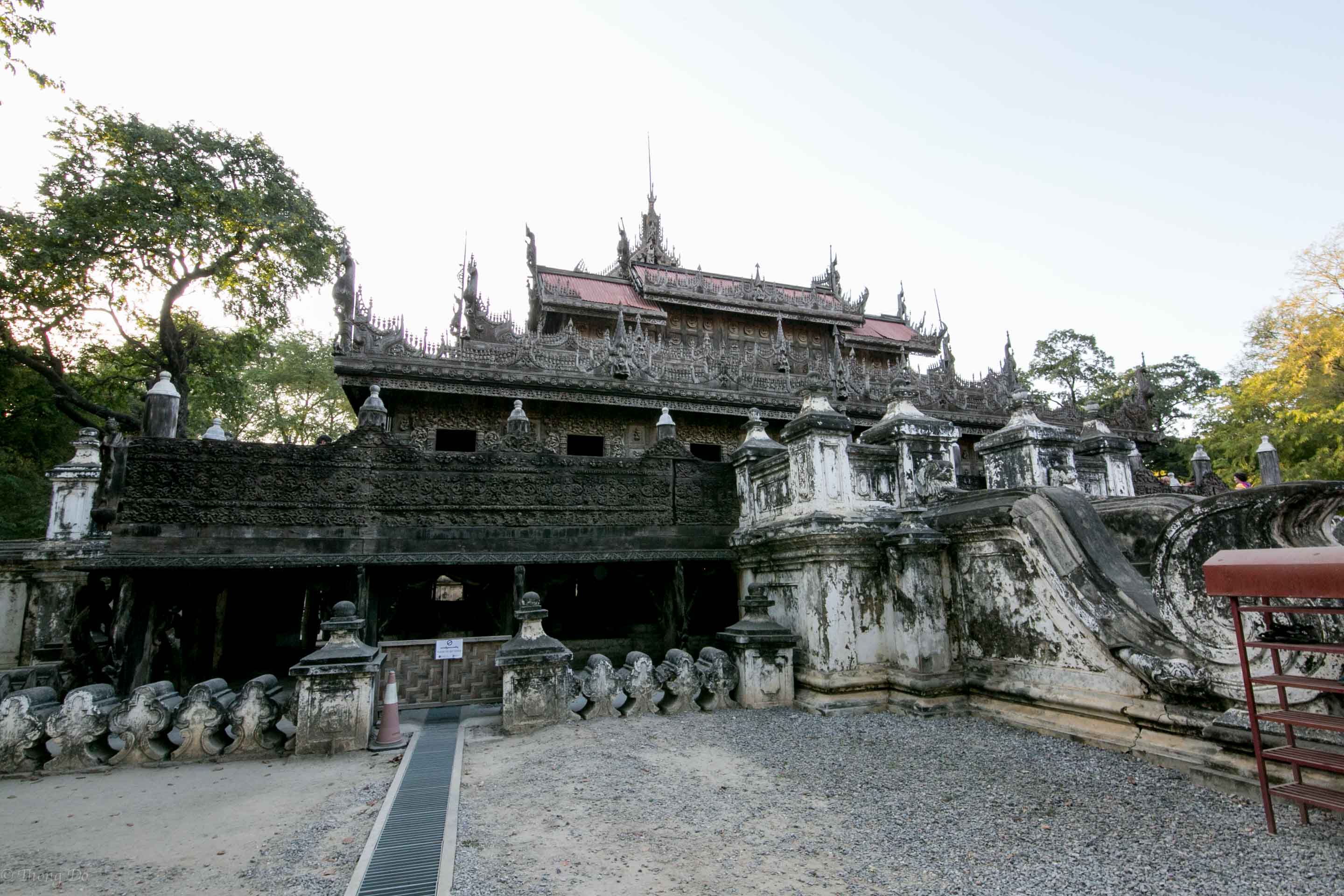
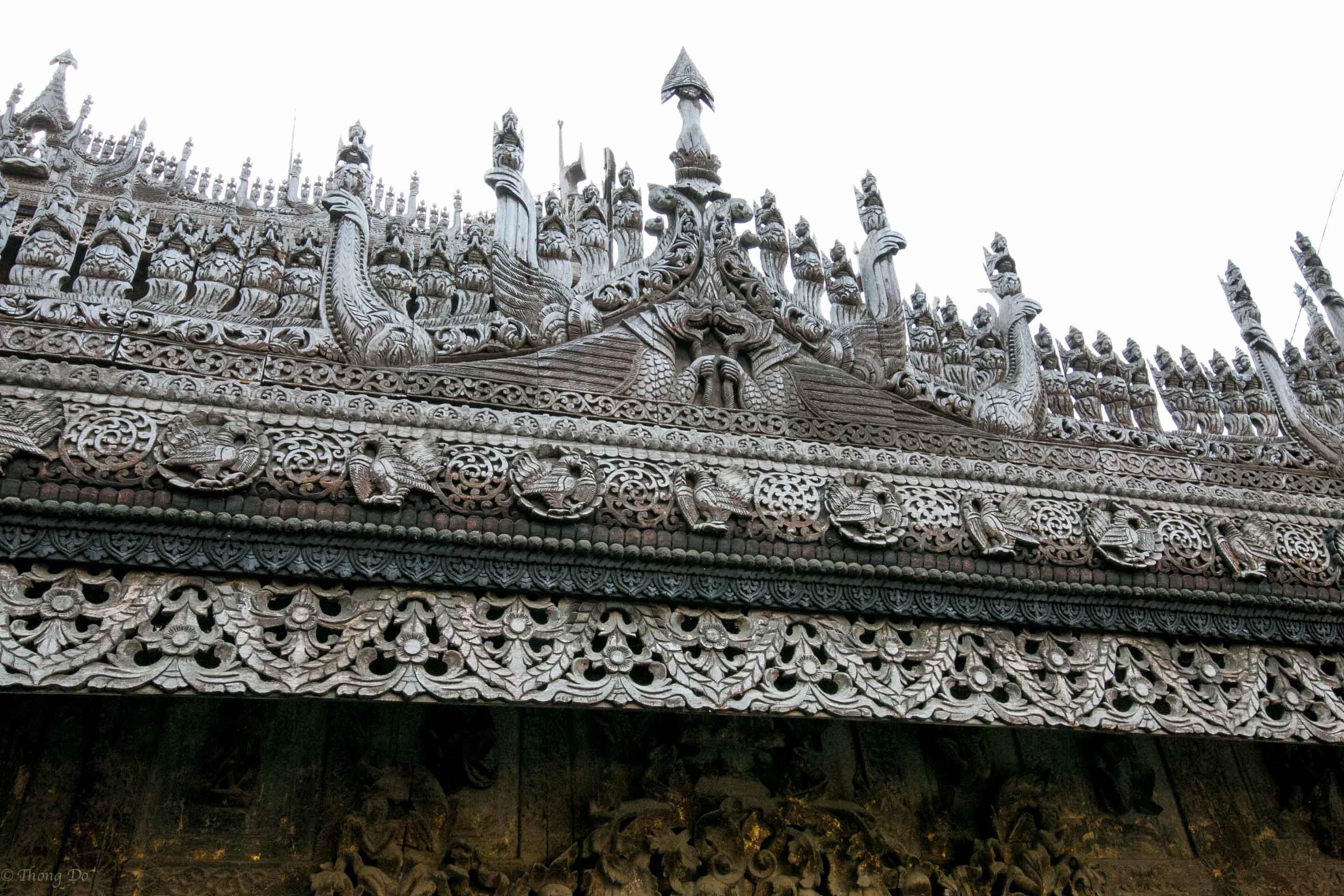
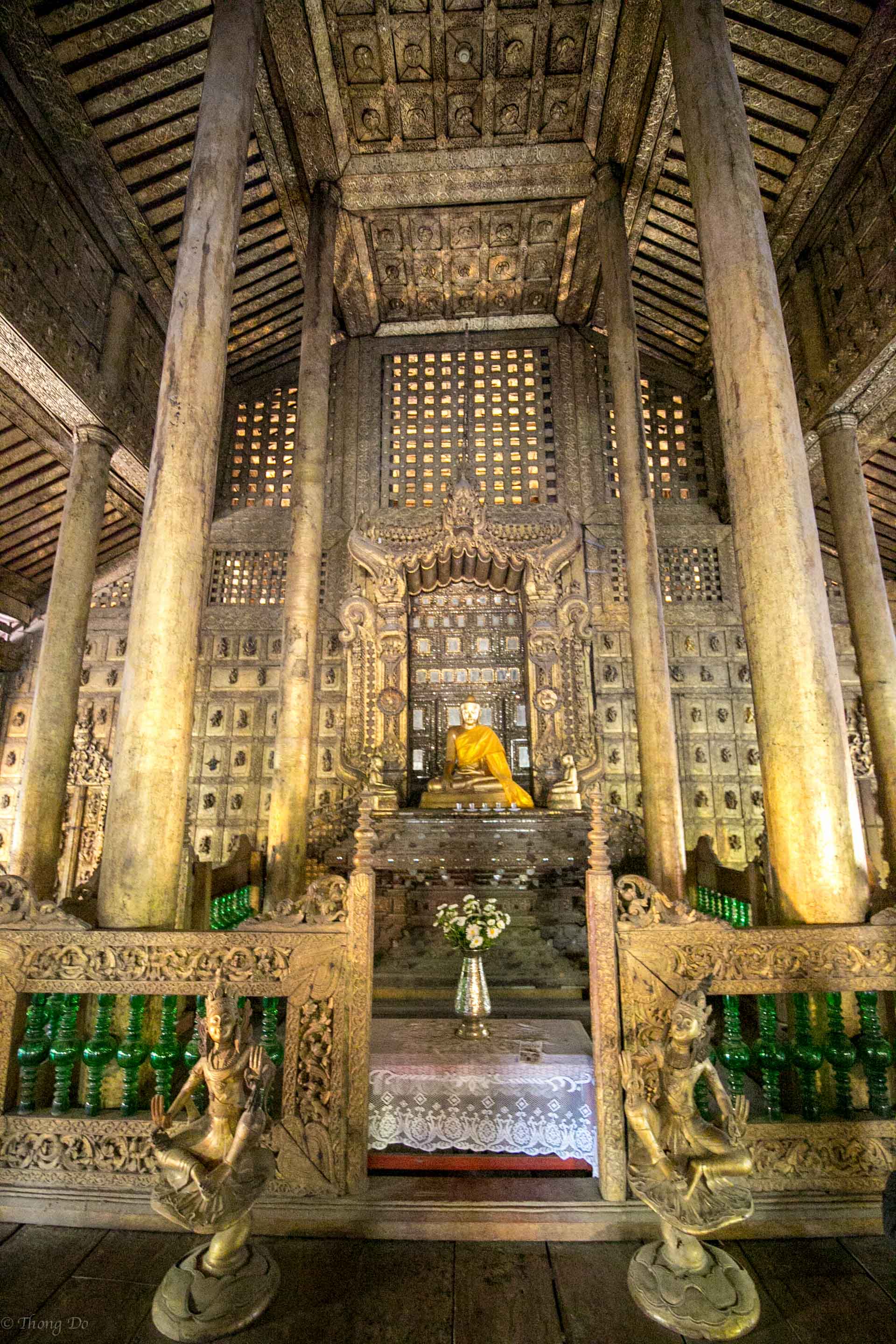
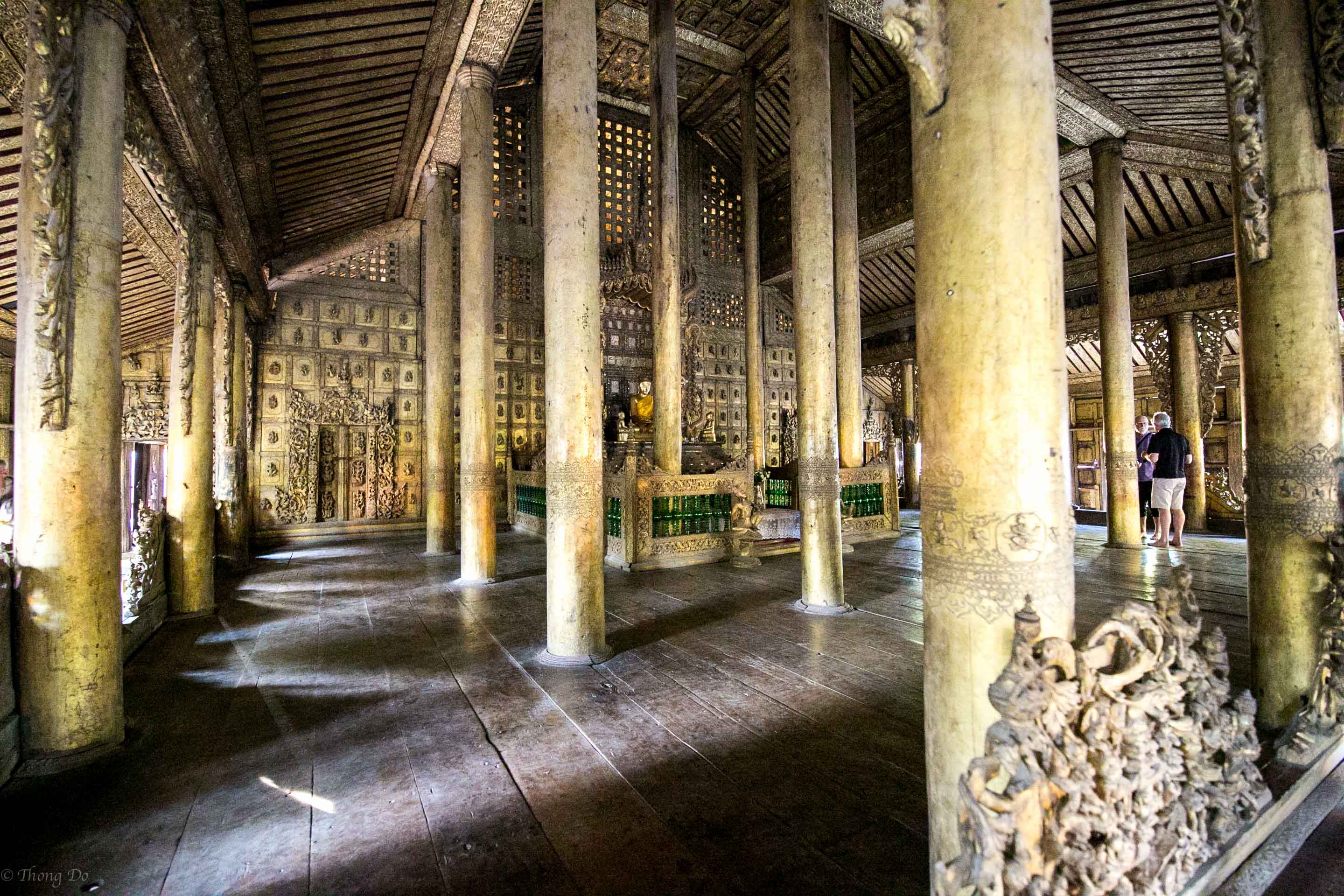
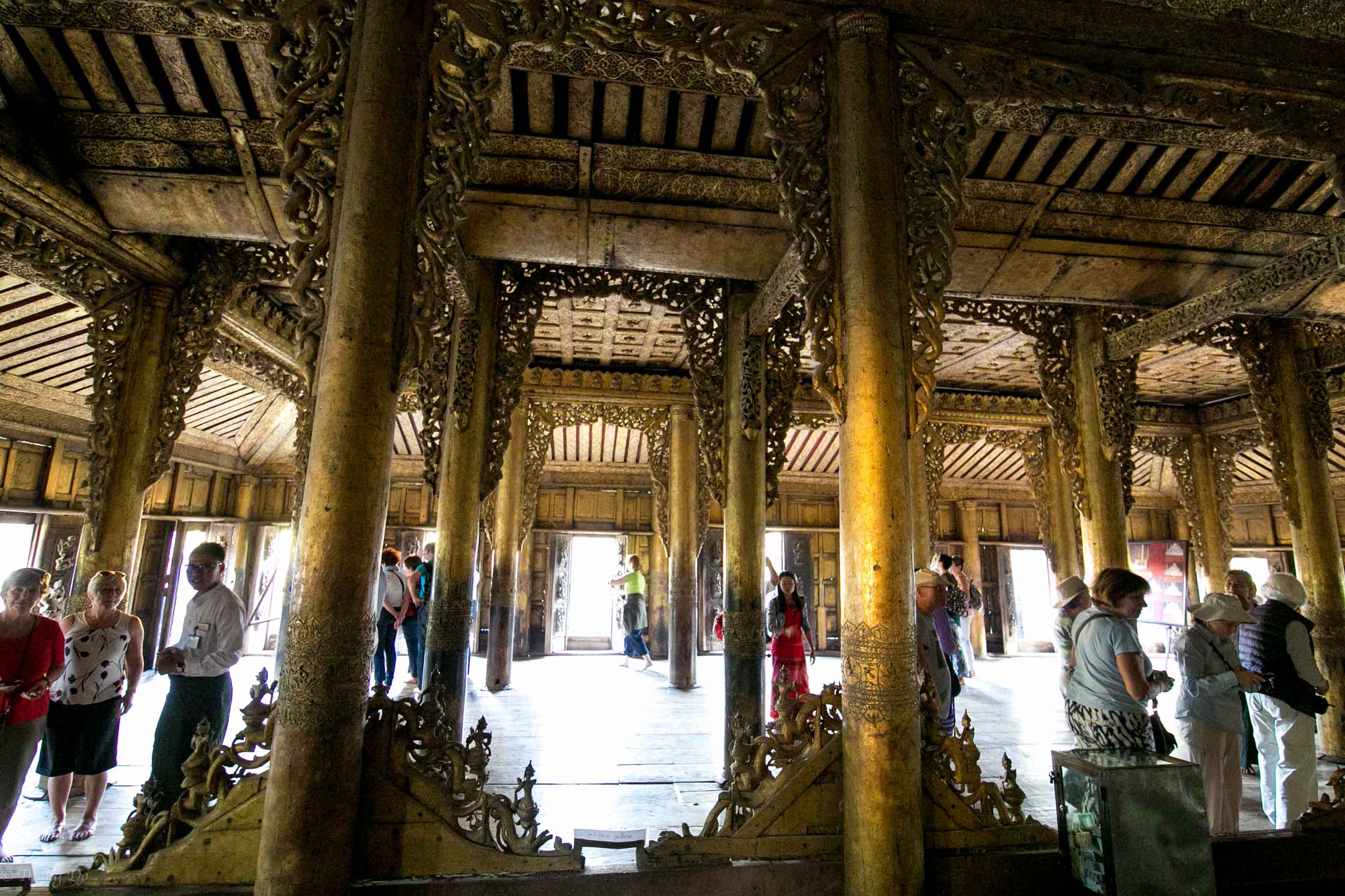
This structure was built in Burmese architectural style and has a four tiered roof. There’s nothing to really say but the place was decorated with intricate and meticulous woodcarvings. Look closely and you’ll see carvings of animals, dancers, flowers, etc. The outer part of the Monastery has obviously degraded the appearance but inside and away from the damaging sunlight you’ll see that it’s in great condition.
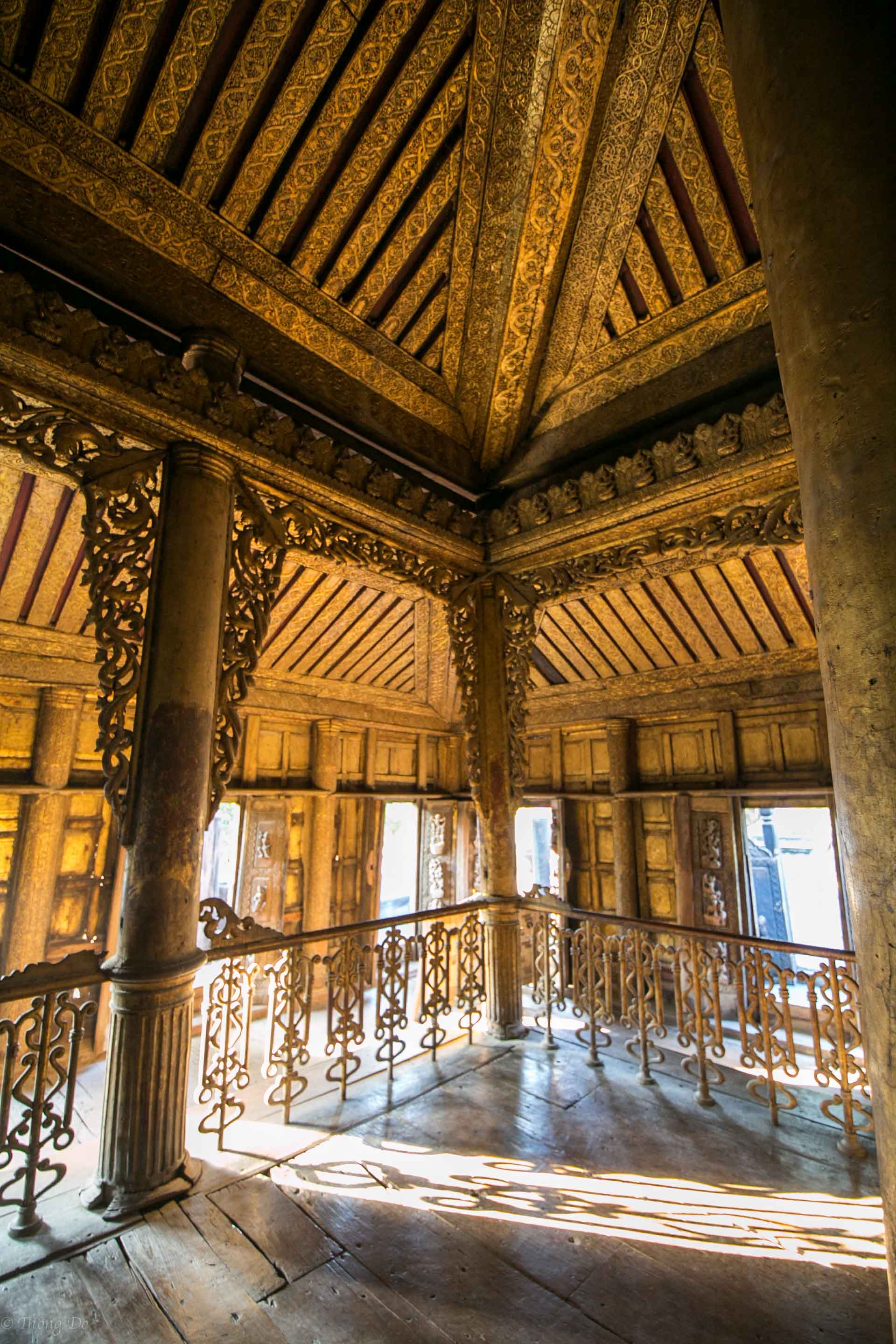
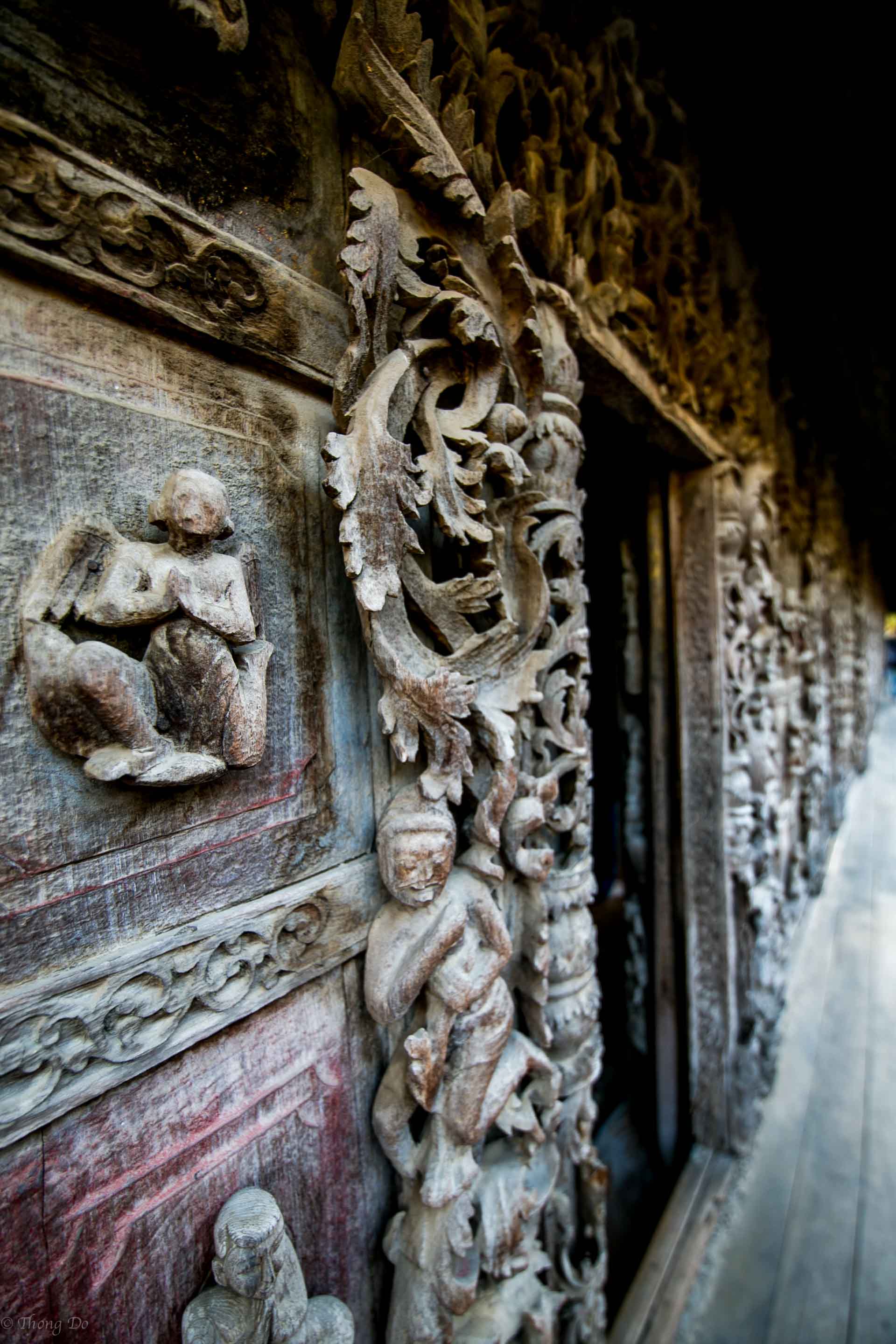
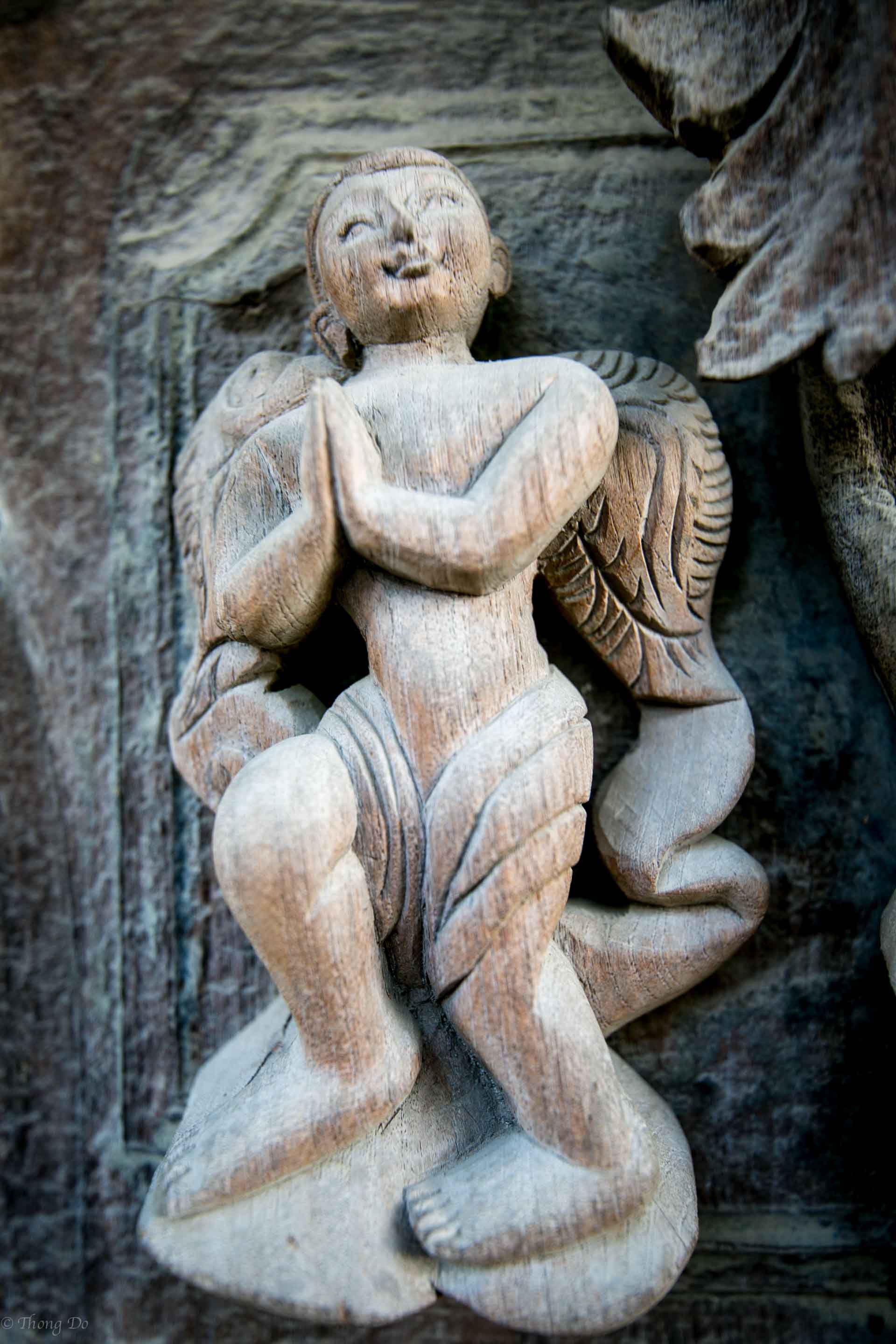
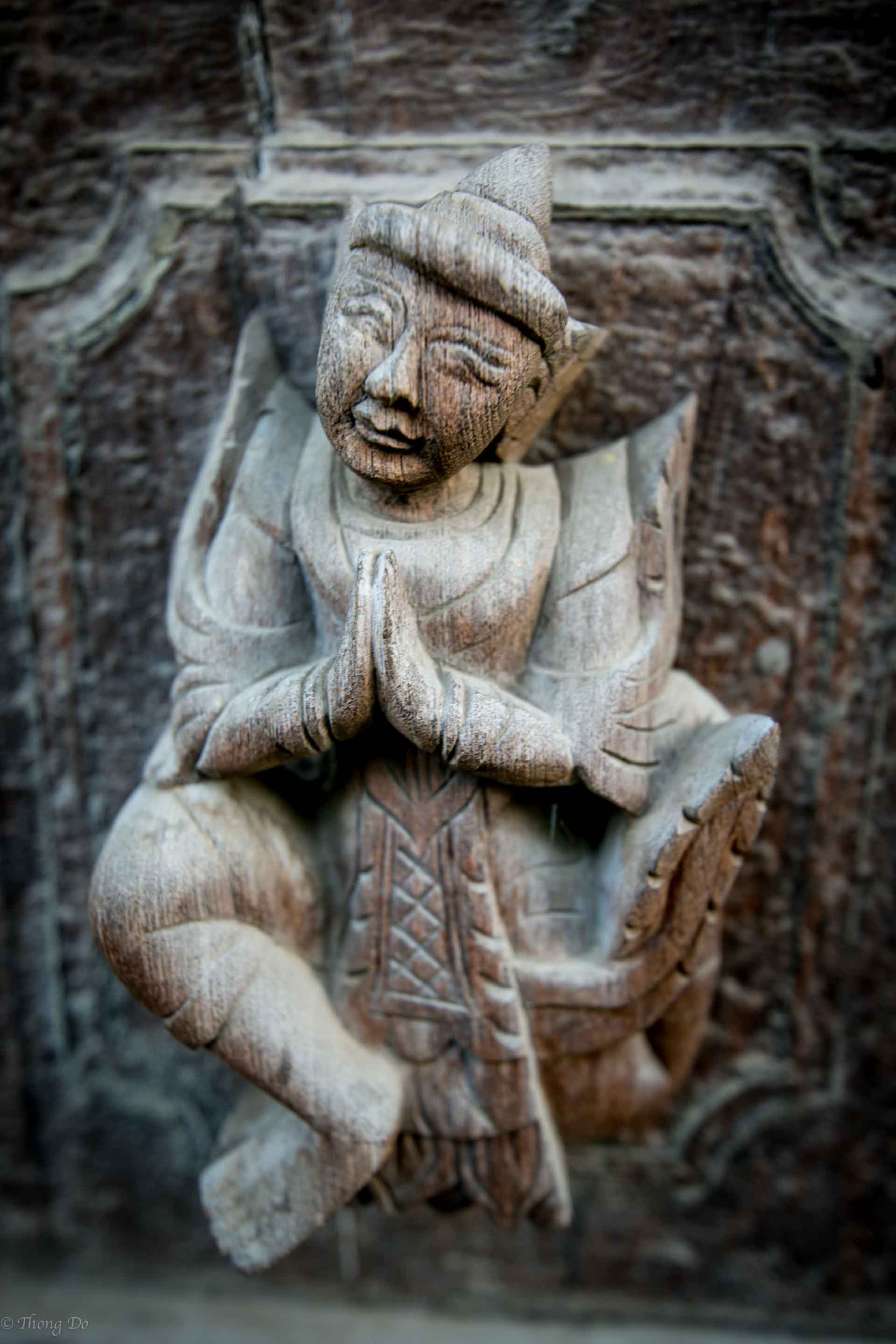
The main room in the center of the building holds the main attraction: a large Buddha image with Nats (spirits) worshipping it. As with the Mahamuni Pagoda’s rules, only men are allowed to go in and worship.
Remember to leave your shoes at the entrance and dress appropriately when entering. You may want to use your wide-angle lens here too. The Shwenandaw Monastery isn’t that big and should take you less than an hour to see it at a comfortable pace.
The other attraction in Mandalay to witness is the Su Taung Pyi Pagoda. It translates as the “wish granting” pagoda and it’s on a landmark you can’t miss. Sitting on top of Mandalay Hill this pagoda stands nearly 240 meters (800 feet) above the city and offers great panoramic views and ideal for sunrise and sunset pictures. King Anawratha constructed it in the year 414 of the Myanmar Era. The cultural significance of this area was due to the fact that when Buddha was visiting Myanmar with his disciple, Ananda, they climbed Mandalay Hill and prophesized that a great city would be founded below the hill 2,400 years after his death.
There are many options to getting to the top. There are covered paths called zaungdans that will take you there. The most popular path is the southern one and at the entrance and you’ll be greeted by two large guardians that are a lion & dragon hybrid (called chinthes) and you can’t miss them! The incline is steep and should take you roughly 45 minutes to an hour to climb the 1,729 steps. You’ll definitely see the famous landmarks if you take this route such as the U Khanti Tazaung, it’s a memorial hall built to honor the monk who was instrumental in financing the magnificent shrines and pagodas in the area. You’ll also see the Shweyattaw Buddha too, the only statue of Buddha pointing in Myanmar. The Buddha’s finger is pointing in the direction of the palace that King Mindon complete and thus fulfilling the prophecy in 1857. The last attraction is the statue of Sanda Mukhi, an ogress to whom Buddha told the prophecy to. If I had the time I would of walked it but it was hot and I was running out of time since I wanted to catch the sunset so my driver took me to the top and luckily they had escalators too.
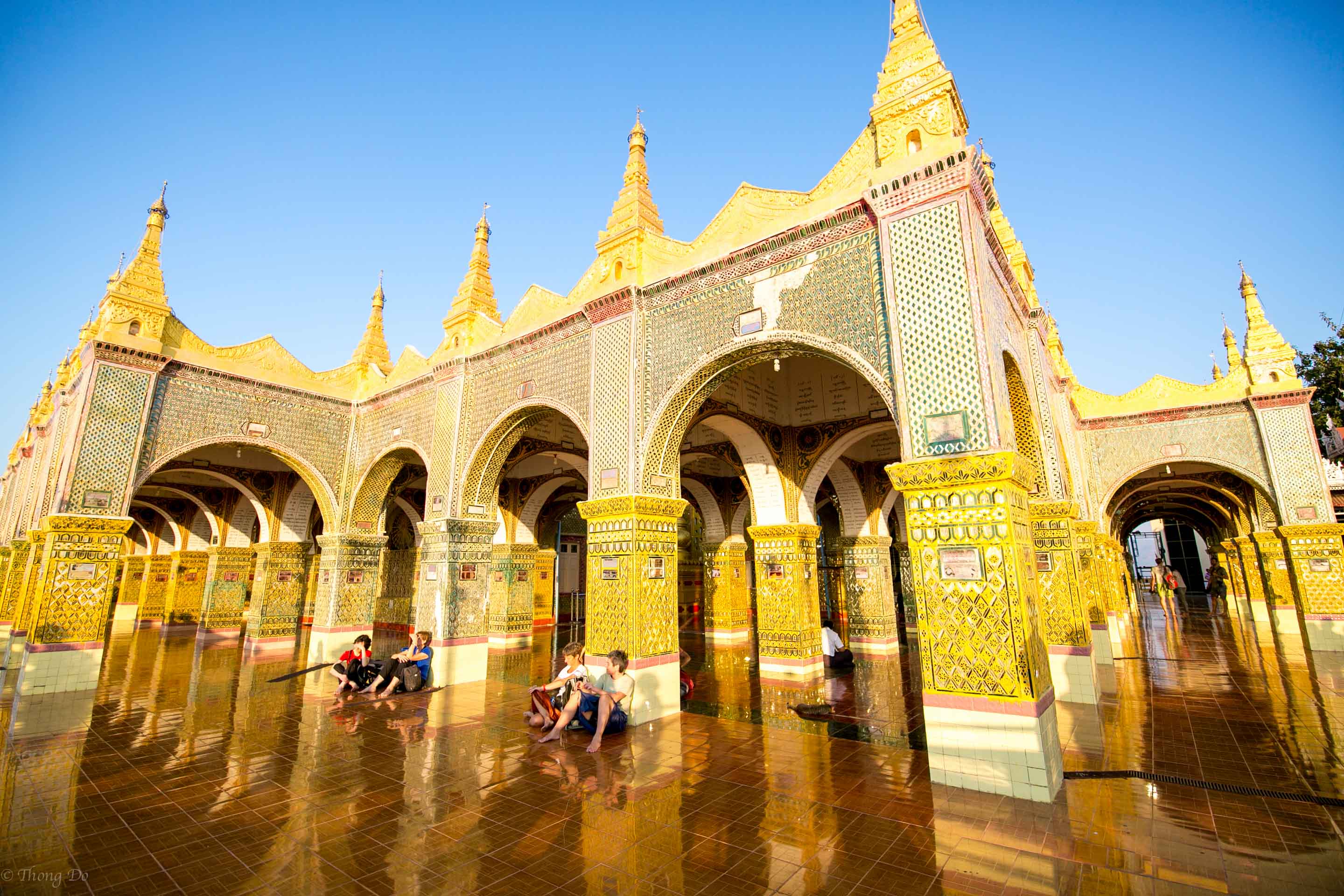
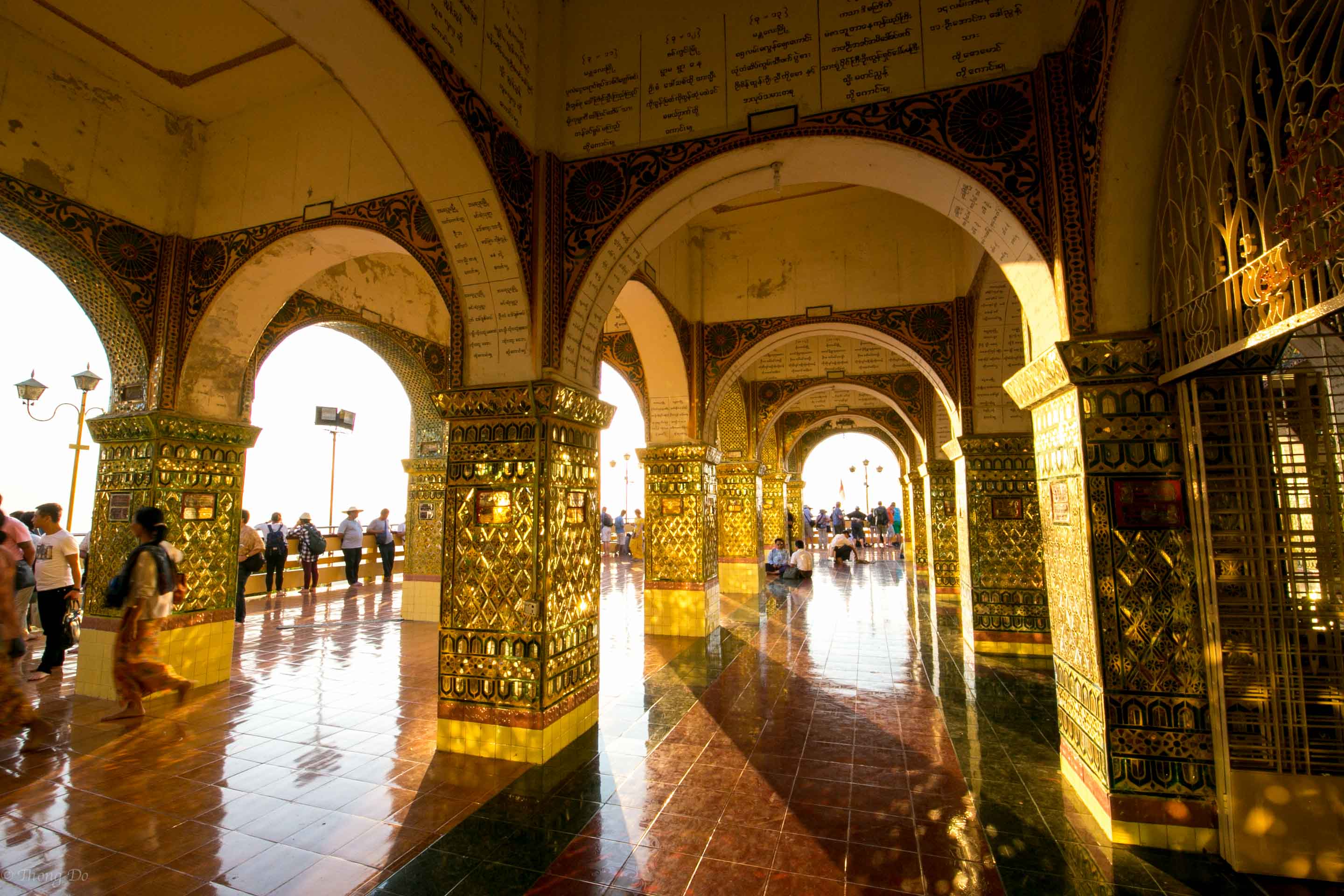
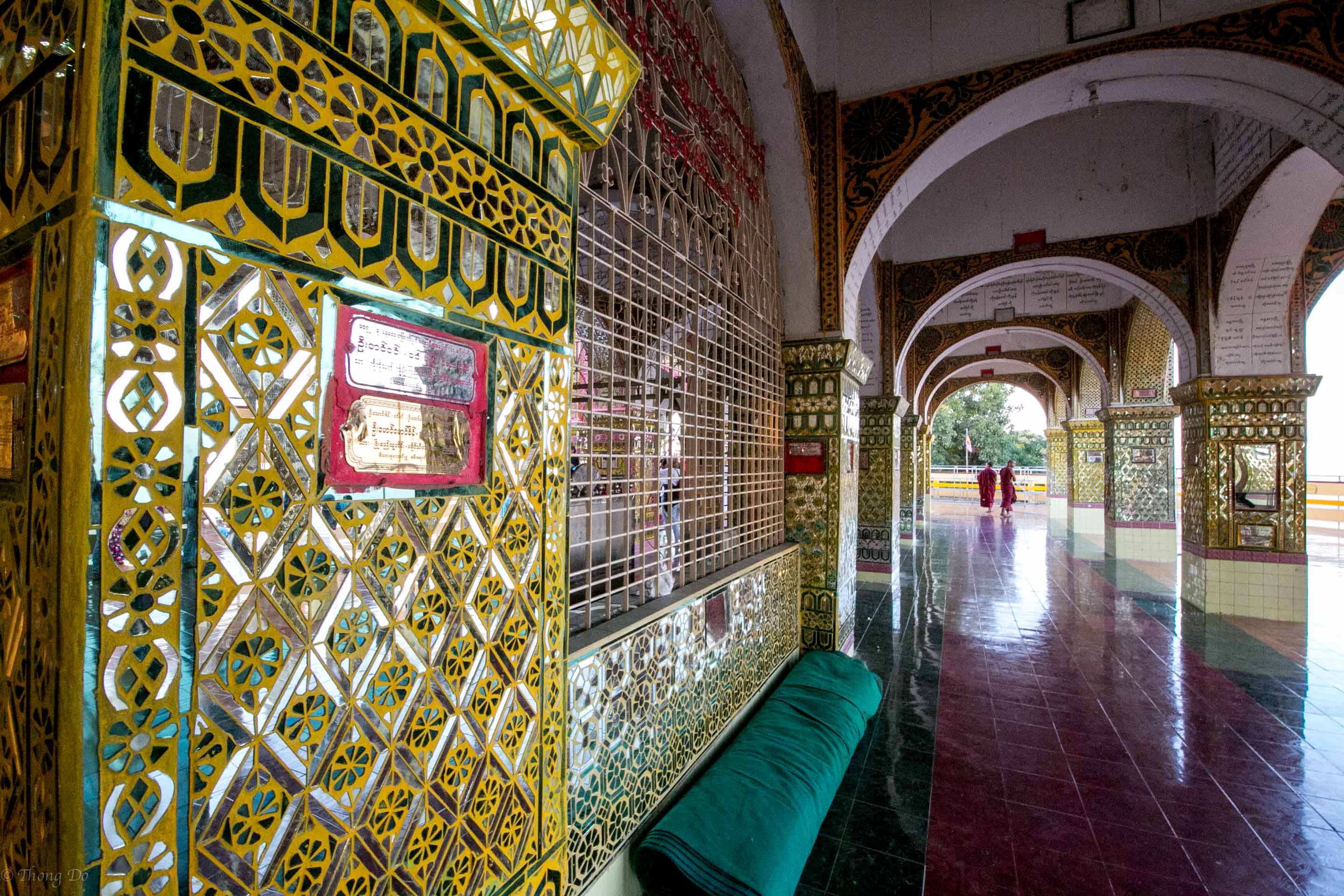
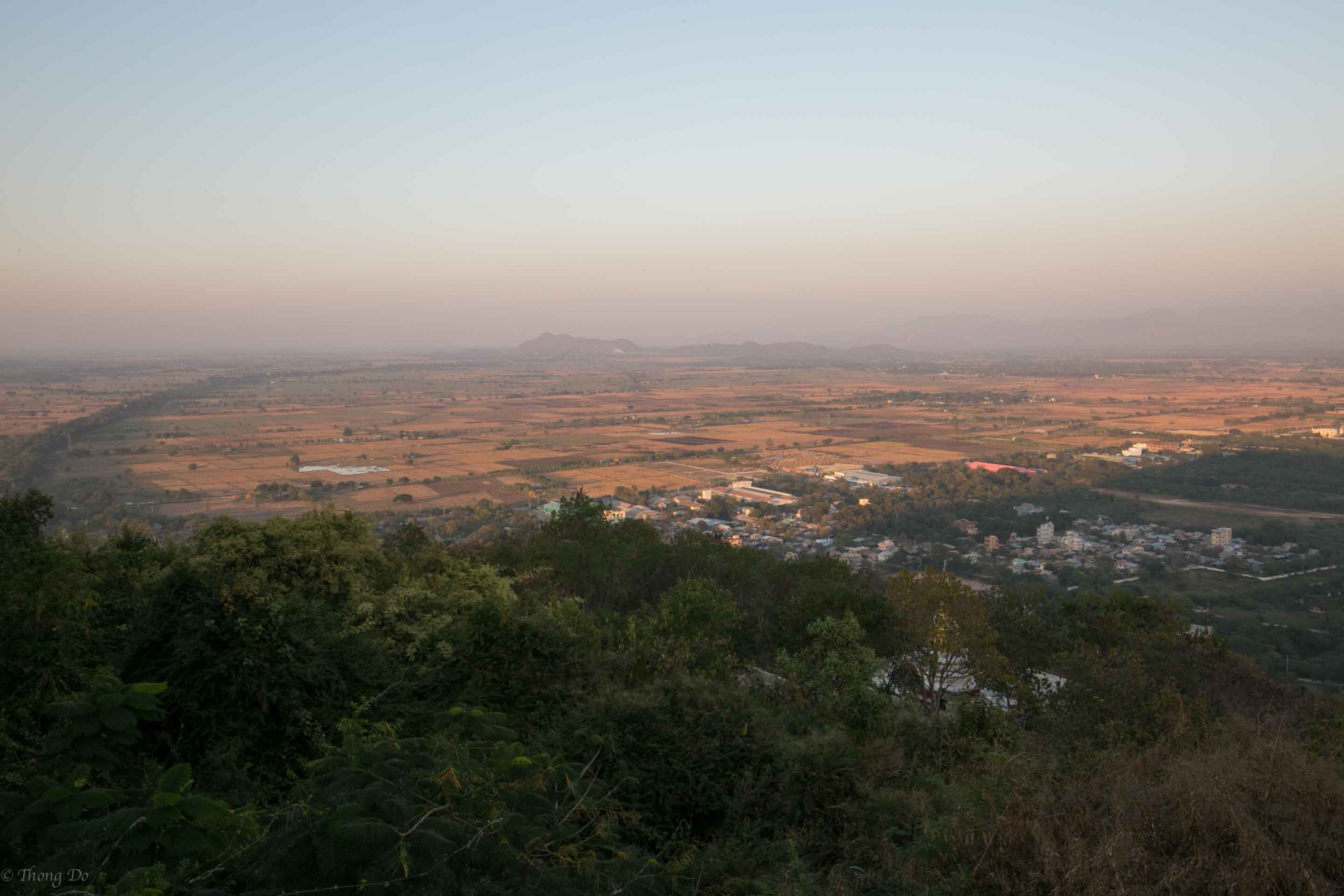
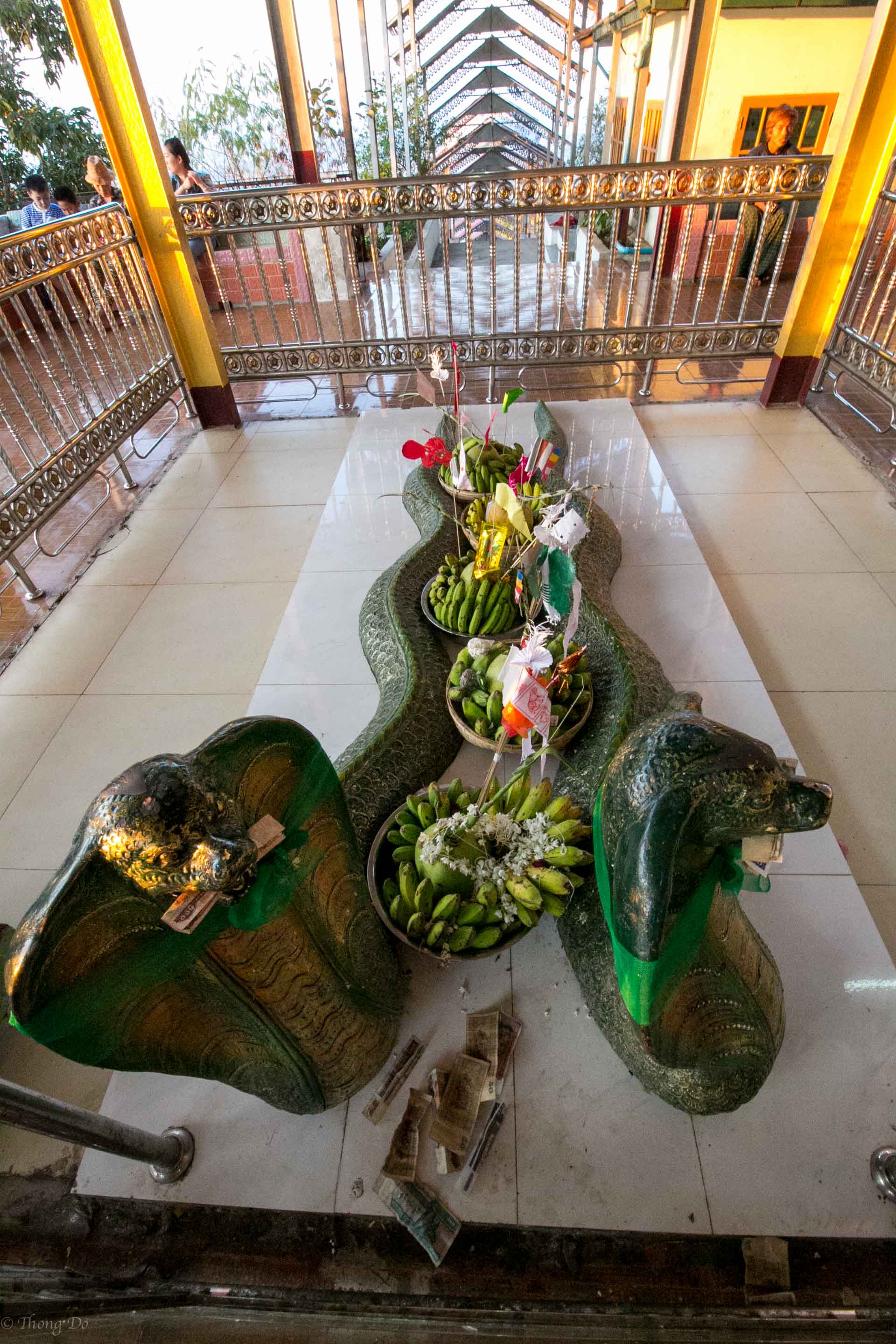
Once you enter the first thing you notice is how shiny everything is. The floors looked like they’ve been waxed on the hour and there is a considerable amount of mirrors or reflective materials placed on the exterior of the temple. You’ll also see numerous monks and nuns walking around too. They are friendly and curious with westerners and will try to practice their English with you. Since I’m Asian, they didn’t bother to try and talk to me but saw them approaching many Anglo-looking visitors. A little sensory overload will occur here due to the never-ending visuals. You can see everything from up here and it offers a great perspective of the places I visited earlier that day. I got there about half an hour before the sun set and it was pretty quiet but lost a good spot for a sunset pic because I decided to wander around and take photos.
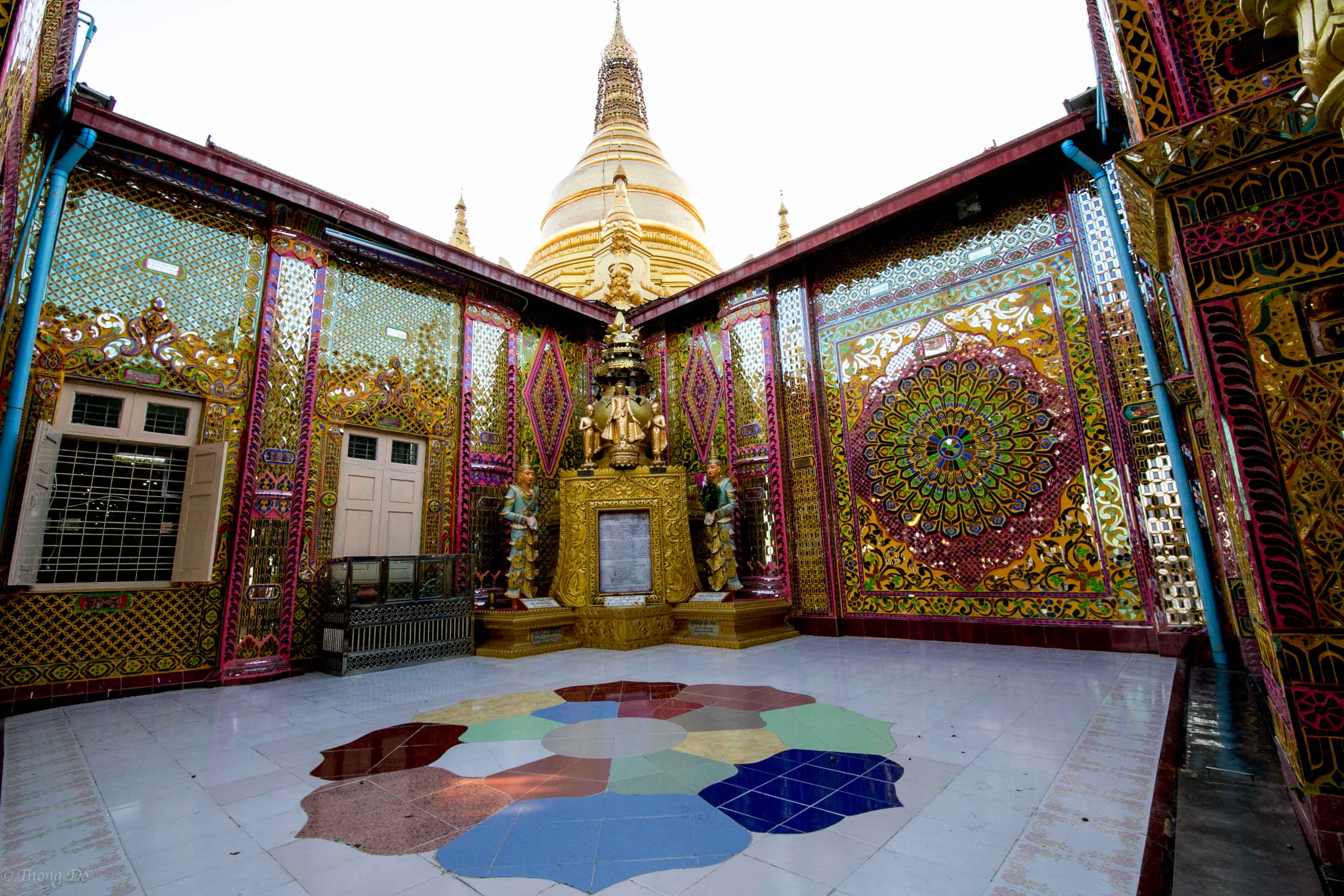
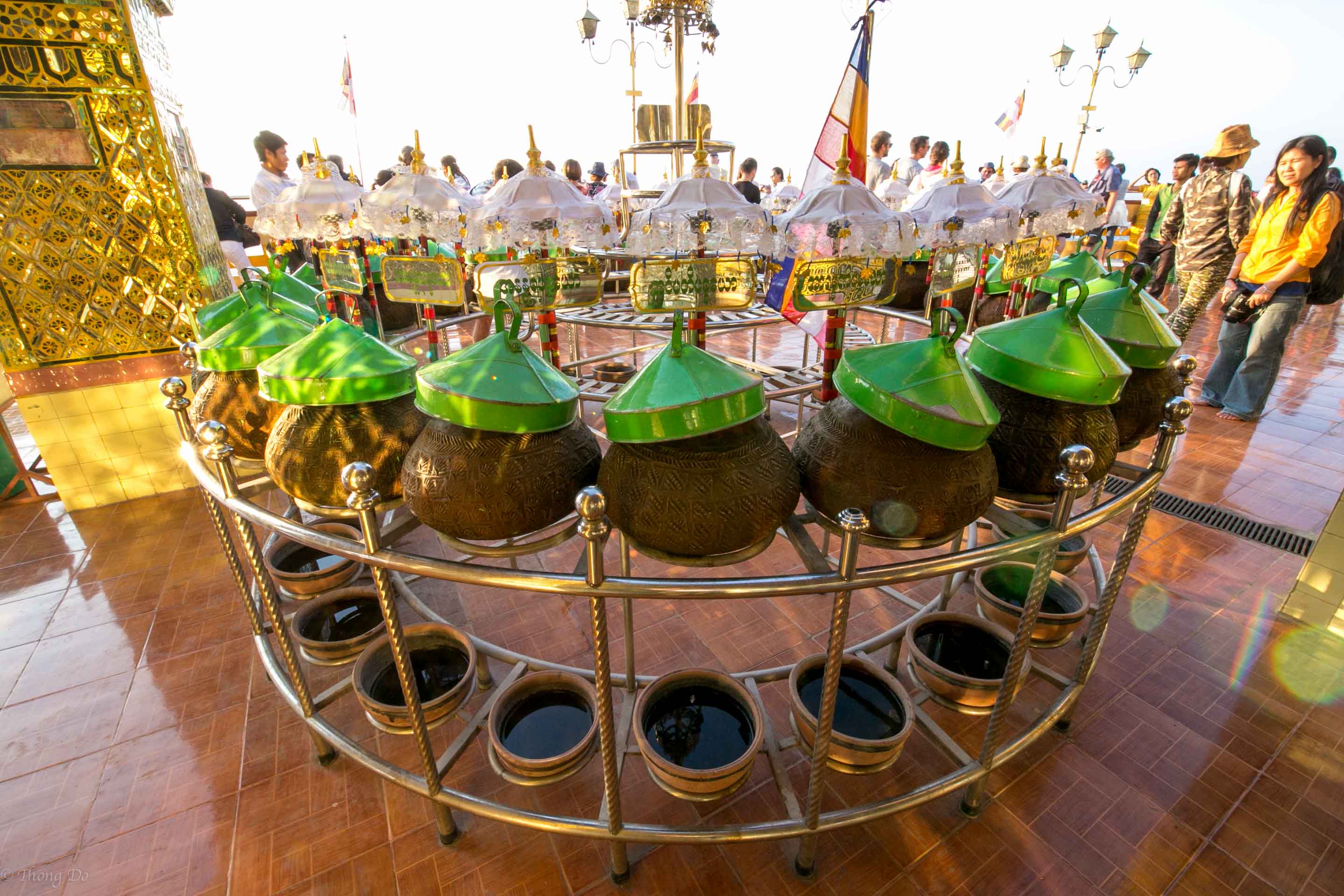



This area also has some history too because ferocious battles took place here during WW2 between the Japanese forces and the British and Gurkha troops.
Remember that this is a holy site and that shoes must be removed and to dress appropriately.
The other highlight in the Mandalay region you have to see is an UNESCO World Heritage Site and locally referred to as the “World’s Largest Book”. King Mindon built the Kuthodaw Pagoda or Royal Merit Pagoda at the same time the Royal Palace was built in the mid 19th century. Located at the base of the Mandalay Hill you can’t miss the 30-meter high (100 foot) zedi (stupa) reaching for the sky. What is most impressive about this site are the 729 slender, whitewashed ancillary pagodas, each containing carved alabaster slabs inscribed with a page from the Tipitaka, the Theravada Pali canon.
The inscriptions were created to mark the 5th Buddhist Synod of 1871 and when completed, took 2,400 monks six months to recite. King Mindon’s order of the “book” creation took nearly 8 years to complete. The texts were copied from ancient manuscripts writted on dried palm leaf, the letters chiseled out of the stone and inlaid with gold leaf. Then each marble slab was enshrined in a structure called Dhamma ceti or kyauksa gu in Burmese “gu” meaning cave. The placements of the shrines are perfectly symmetrical and once you see the miniature model in the main entrance hallway it gives you a better idea of how it was designed.
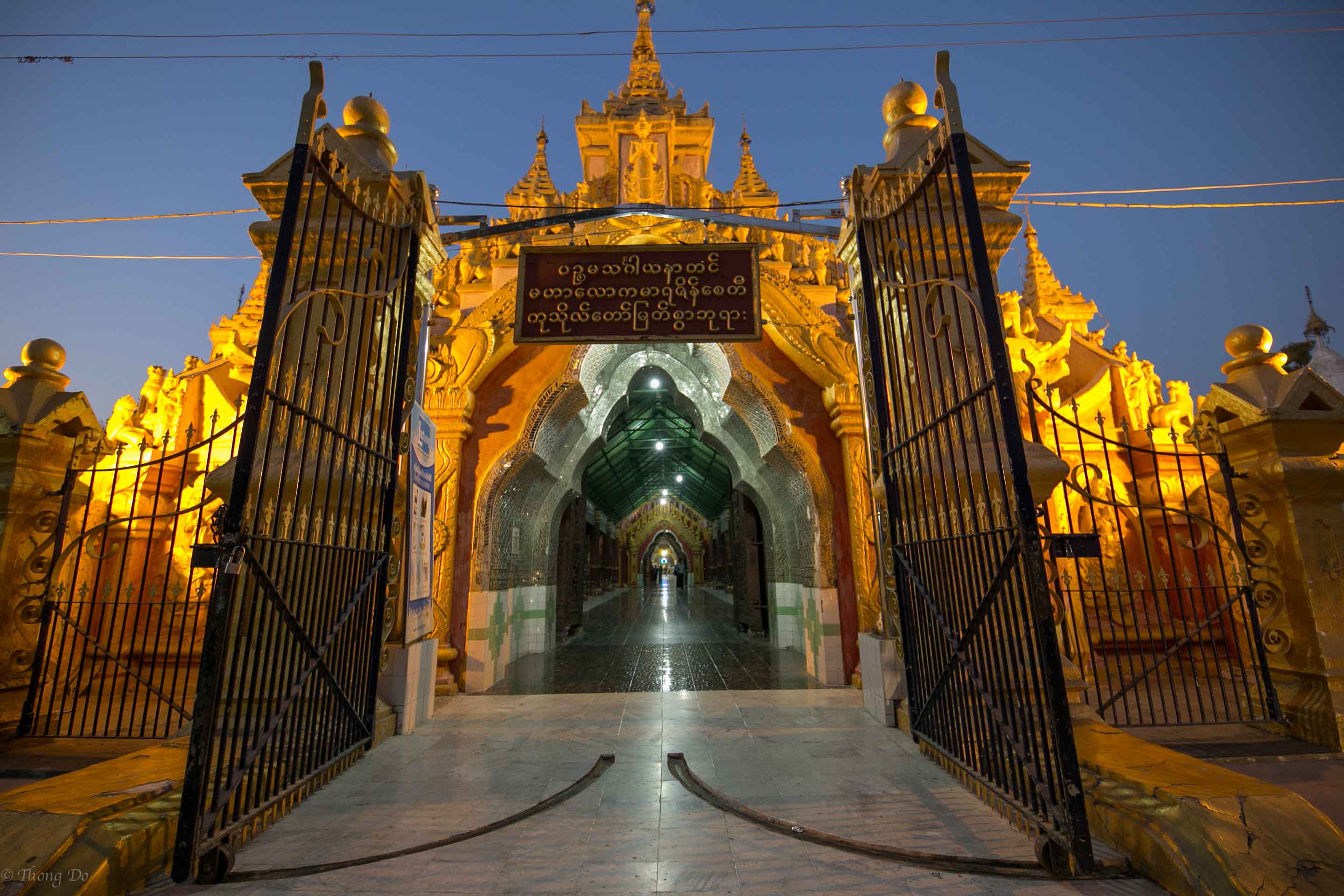
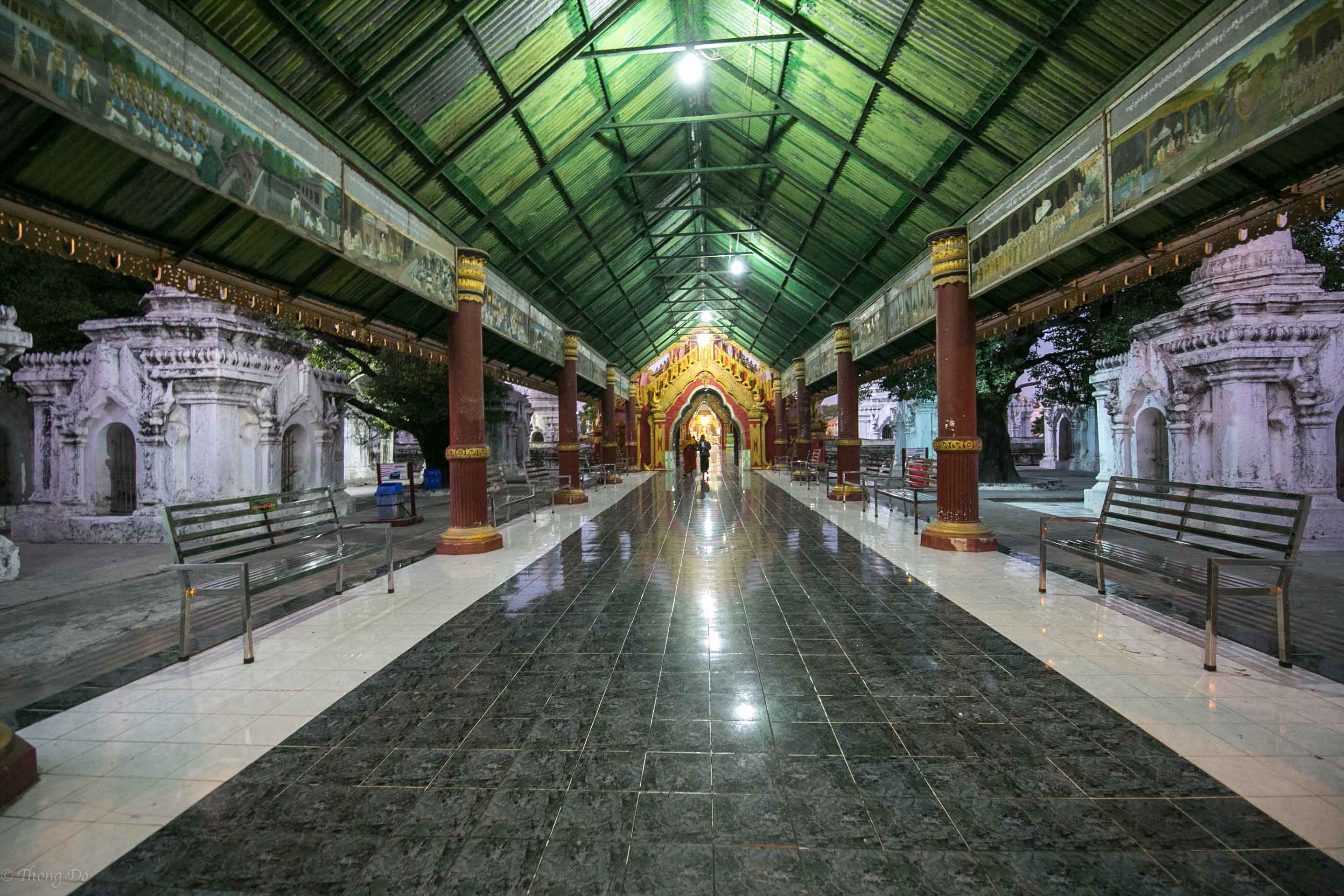
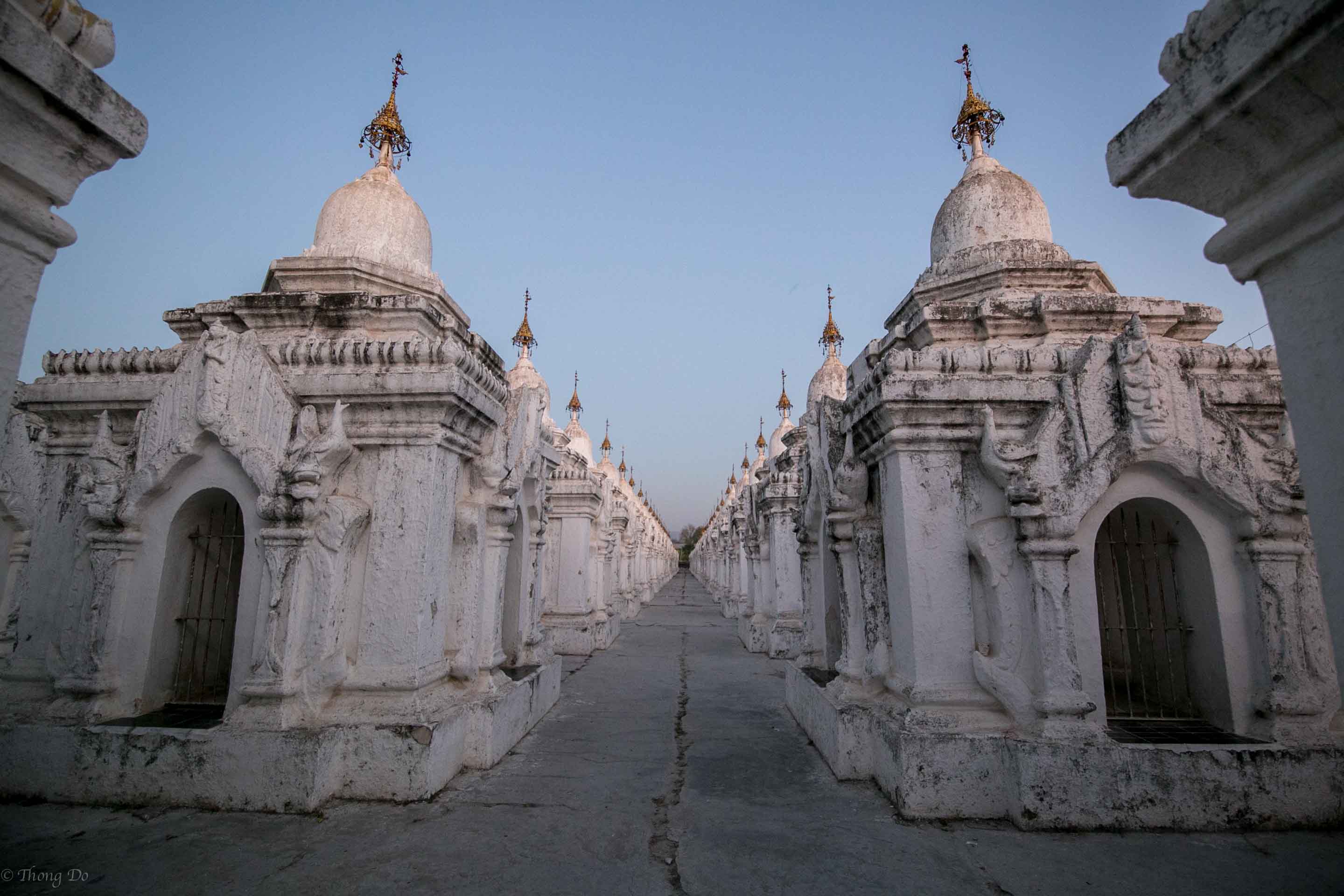
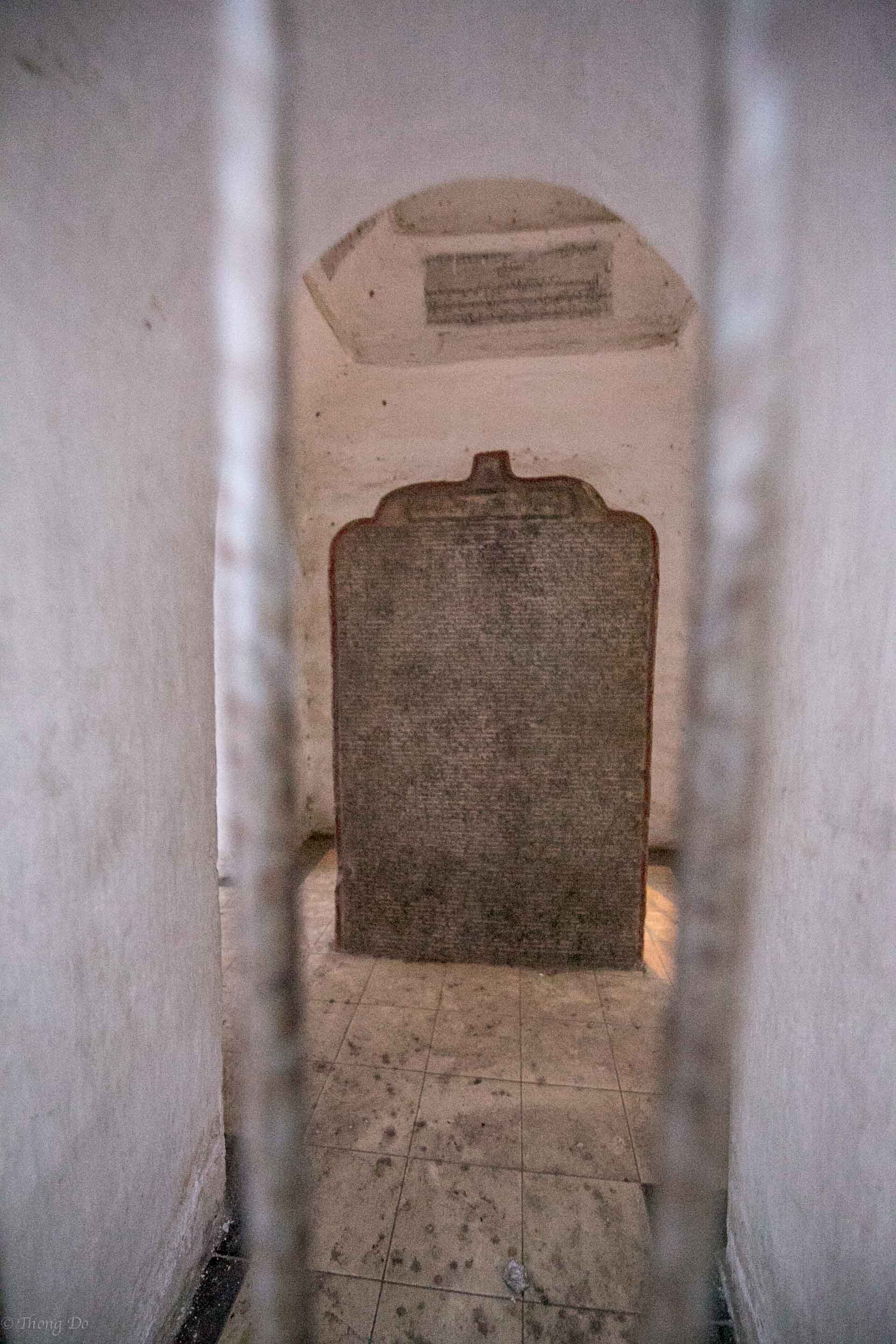
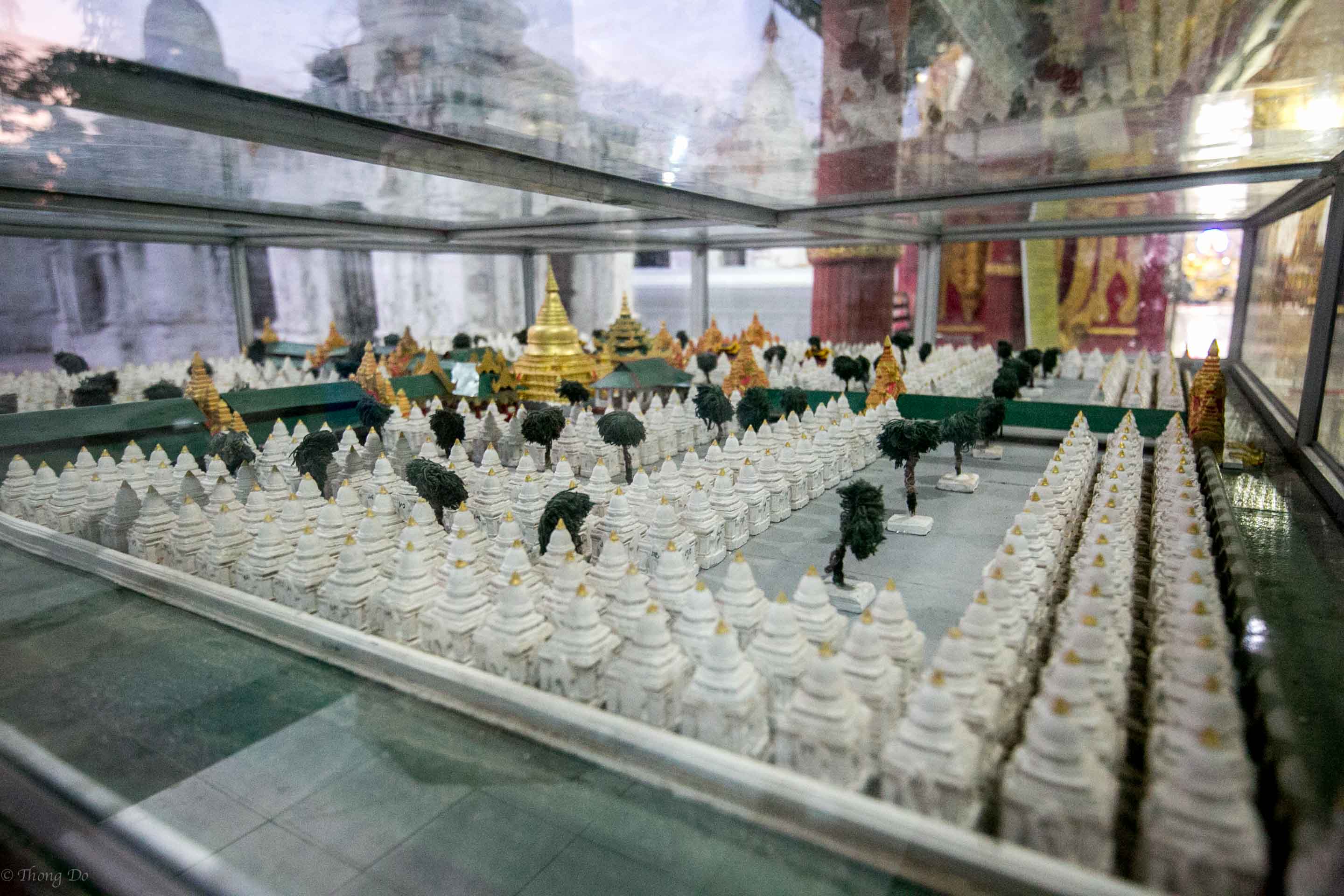
To enter this huge complex you’ll be greeted by an extravagant gate adorned with sculptures of deities and animals from Buddhist and Hindu mythology. You take a long corridor that leads to the stupa at the center of the complex and you can see the ornate detail and craftsmanship. The end of the corridor will lead you to an image of a large Buddha and from there you’ll see the main pagoda. Completed in 1859 it was modeled after the Shwezigon Pagoda in Bagan. It’s a bell shaped stupa rests on a base of three squared receding tiers. There are four corners of the pagoda and a golden chinthe, a mythical lion and dragon hybrid guard each one.
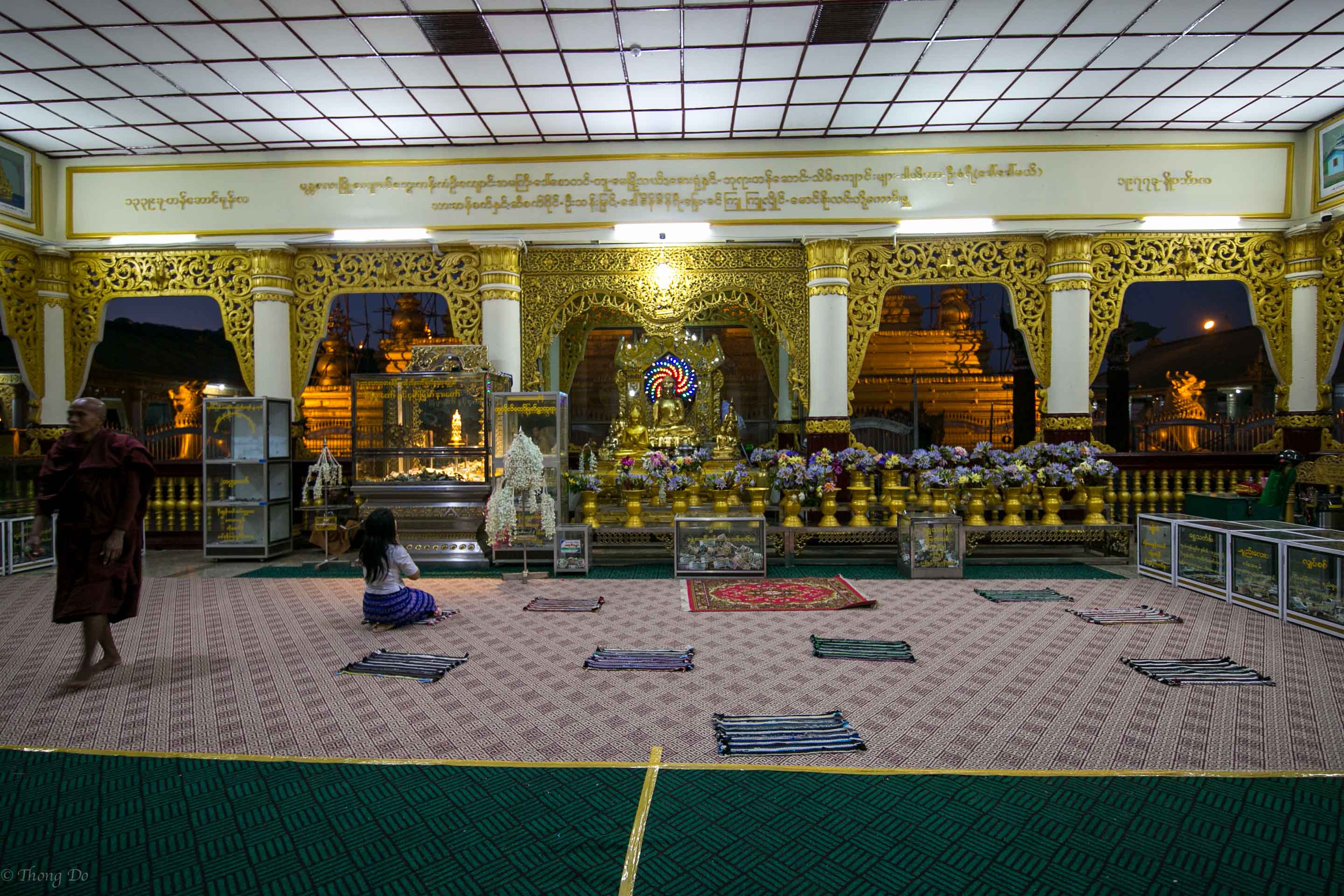
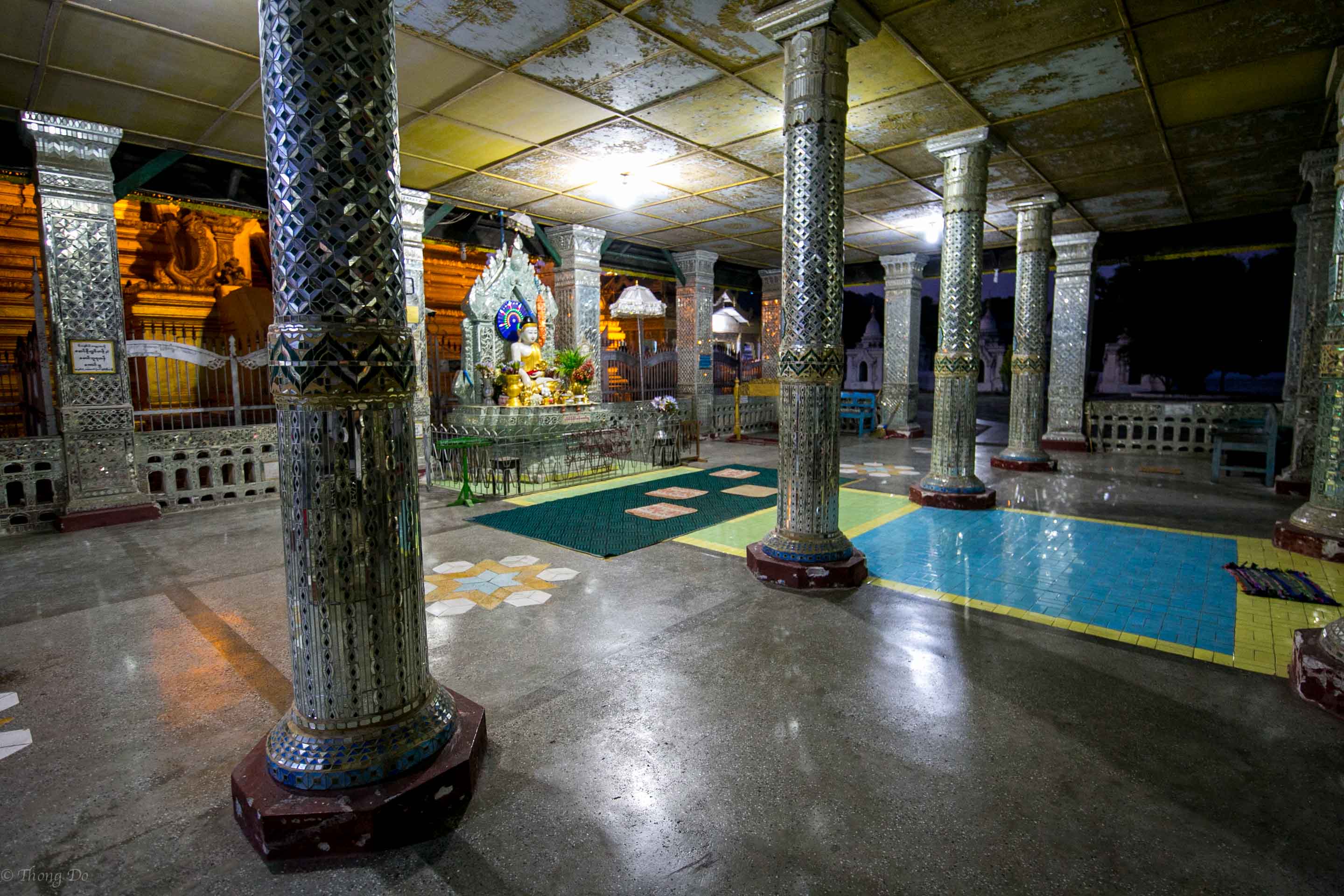
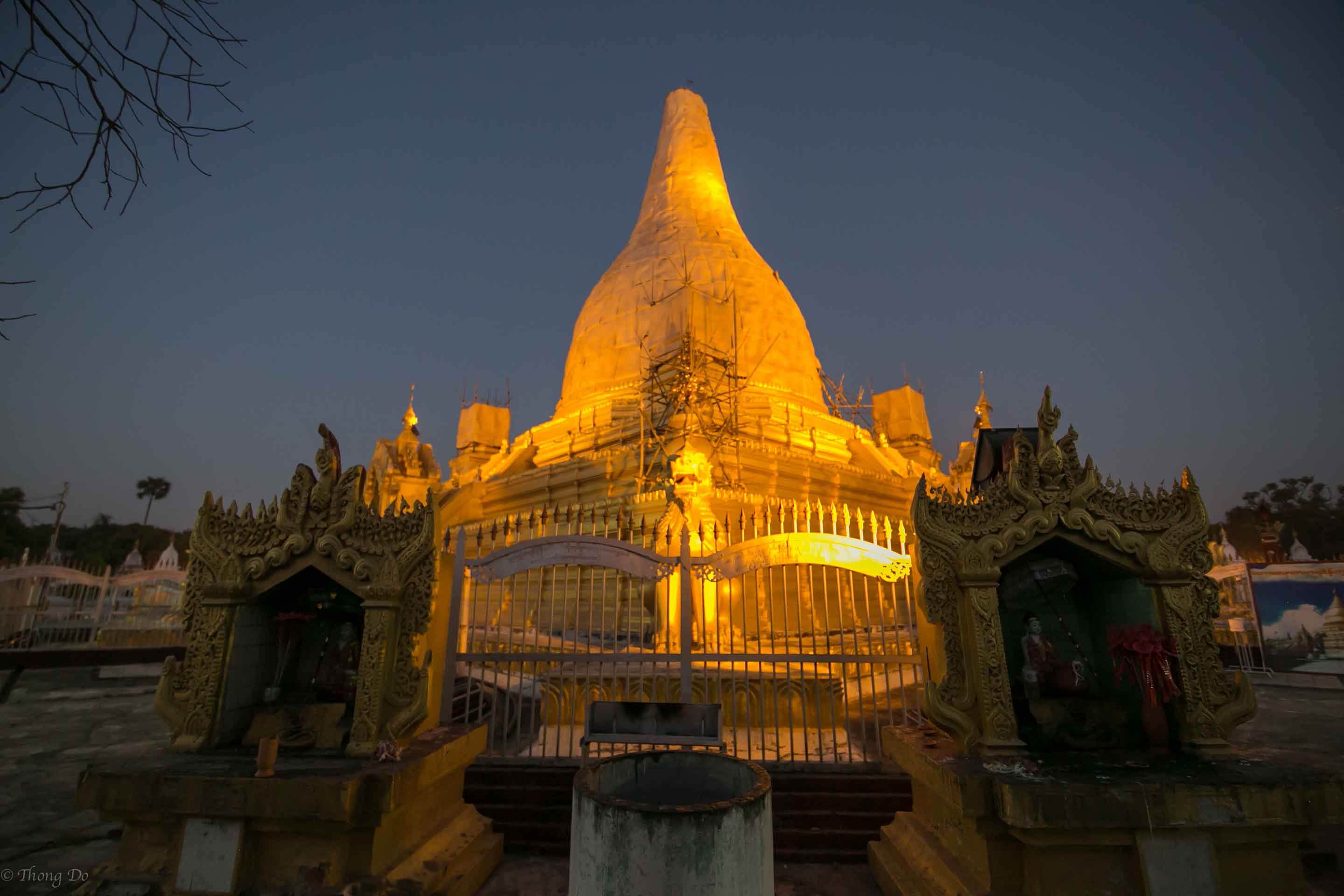

I visited this place after the Su Taung Pyi Pagoda in the evening after sunset so I didn’t spend as much time here as I would like. It’s definitely worth checking out and do give yourself at least an hour and a half here to explore.
As always, it’s best to have slippers in this area so you don’t have to spend so much time taking off your shoes and socks. Dress appropriately too. It’s open from 8am-8pm daily.
Happy Traveling.
